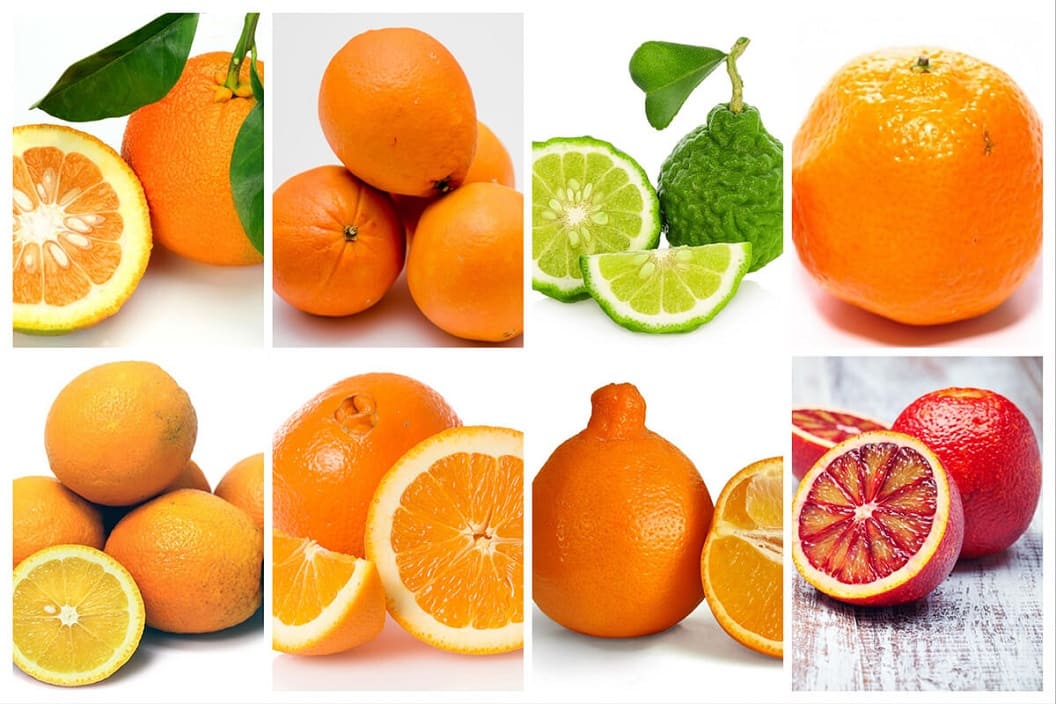Picture this: You’re standing in the produce aisle, surrounded by bins of bright orange spheres, each labeled with different names—Navel, Valencia, Blood Orange, Cara Cara. They all look like oranges, but which one should you grab for your morning juice? Which will make the best marmalade? And what exactly makes a “blood” orange so special?
If you’ve ever felt overwhelmed by orange options, you’re not alone. With over 400 varieties grown worldwide, oranges are far more diverse than most people realize.
Each type brings its own personality to the table—some are juice-heavy powerhouses, others are snacking superstars, and a few are culinary chameleons that shine in both sweet and savory applications.
By the end of this guide, you’ll navigate the citrus section like a pro, knowing exactly which orange to choose for any occasion. Whether you’re planning to juice, bake, snack, or cook, there’s a perfect orange variety waiting for you.
👉 Discover 35+ Apple Varieties With Selection Tips & Their Perfect Uses
The Orange Family Tree: Understanding the Main Groups
Before diving into specific varieties, it helps to understand how oranges are organized. Think of it like a family reunion—there are several distinct branches, each with their own characteristics and personalities.
1. Sweet Oranges (Citrus sinensis) make up the largest family and include most oranges you’ll find at the grocery store.
- Navel oranges – distinguished by their “belly button” formation
- Valencia oranges – the juice champions
- Blood oranges – the dramatic ones with red flesh
- Common sweet oranges – everyday varieties like Hamlin and Trovita
2. Mandarin Oranges (Citrus reticulata) are technically their own species but often grouped with oranges. These include tangerines, clementines, and satsumas—the easy-peeling, lunch-box favorites that range from candy-sweet to pleasantly tart.
3. Bitter Oranges (Citrus aurantium) are the rebels of the family—too sour to eat fresh but essential for marmalades and cooking, bringing complexity that sweet oranges simply can’t match.
Sweet Orange Superstars: The Crowd Pleasers
Navel Oranges: The All-American Favorites
Navel oranges are the quintessential American orange, and for good reason. That distinctive “navel” marking isn’t just for show—it’s actually a secondary fruit growing inside the main fruit, which also explains why navels are naturally seedless.
This unique mutation also means navel trees produce no viable pollen, so new trees must be propagated through grafting.
1. Washington Navel is the granddaddy of them all. These large, thick-skinned oranges are incredibly sweet with low acidity, making them perfect for eating fresh. The thick, pebbly skin protects the fruit during shipping and makes them easy to peel by hand.
Their juice is delicious when consumed immediately, but develops a bitter taste if stored due to a compound called limonin, so drink up quickly.
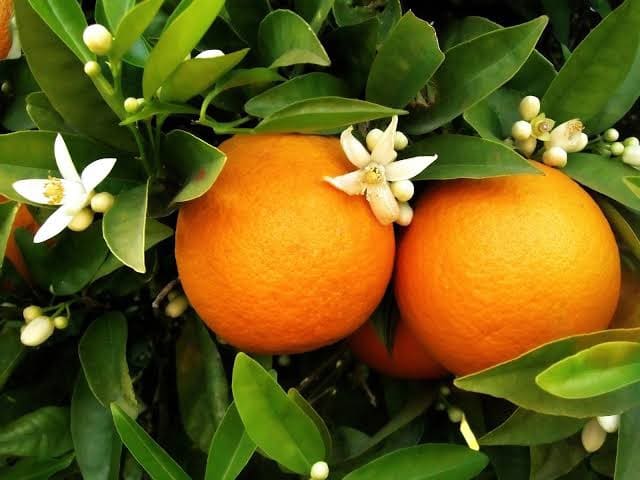
2. Cara Cara Navel oranges are the Instagram stars of the orange world. Cut one open and you’ll reveal stunning pink-to-red flesh that’s as beautiful as it is delicious. They’re sweeter and less acidic than regular navels, with subtle hints of cherry and berry flavors.
The pink color comes from lycopene—the same antioxidant found in tomatoes and pink grapefruit—and they contain about 20% more vitamin C and 30% more vitamin A than regular navels. Unlike blood oranges, their color remains consistent regardless of temperature variations.
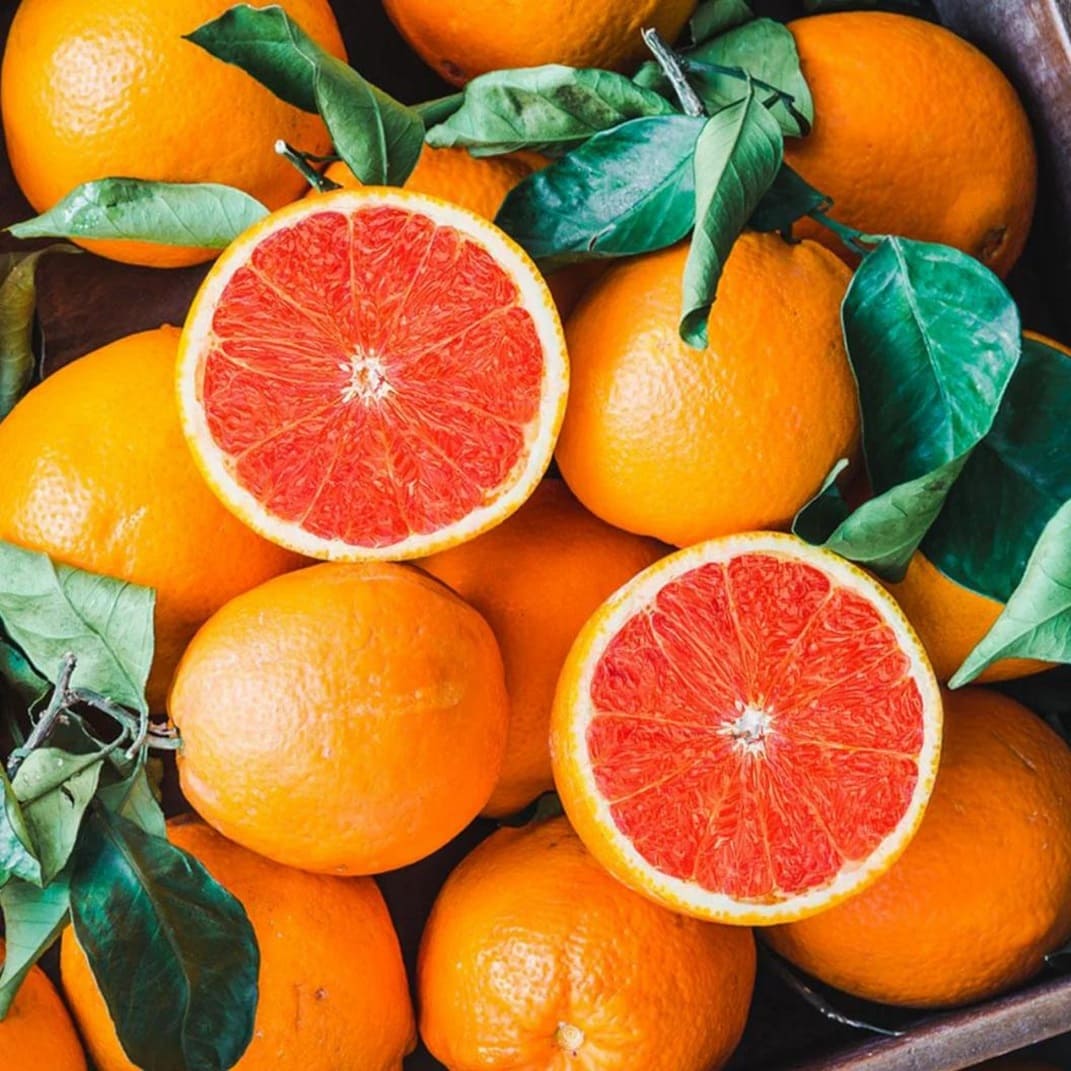
3. Lane Late Navel extends your navel season well into summer. These Australian imports ripen later than Washington navels and can hang on the tree for months without losing quality. They’re slightly smaller with smoother skin but just as sweet, making them perfect for those who want fresh navels beyond the typical winter season.
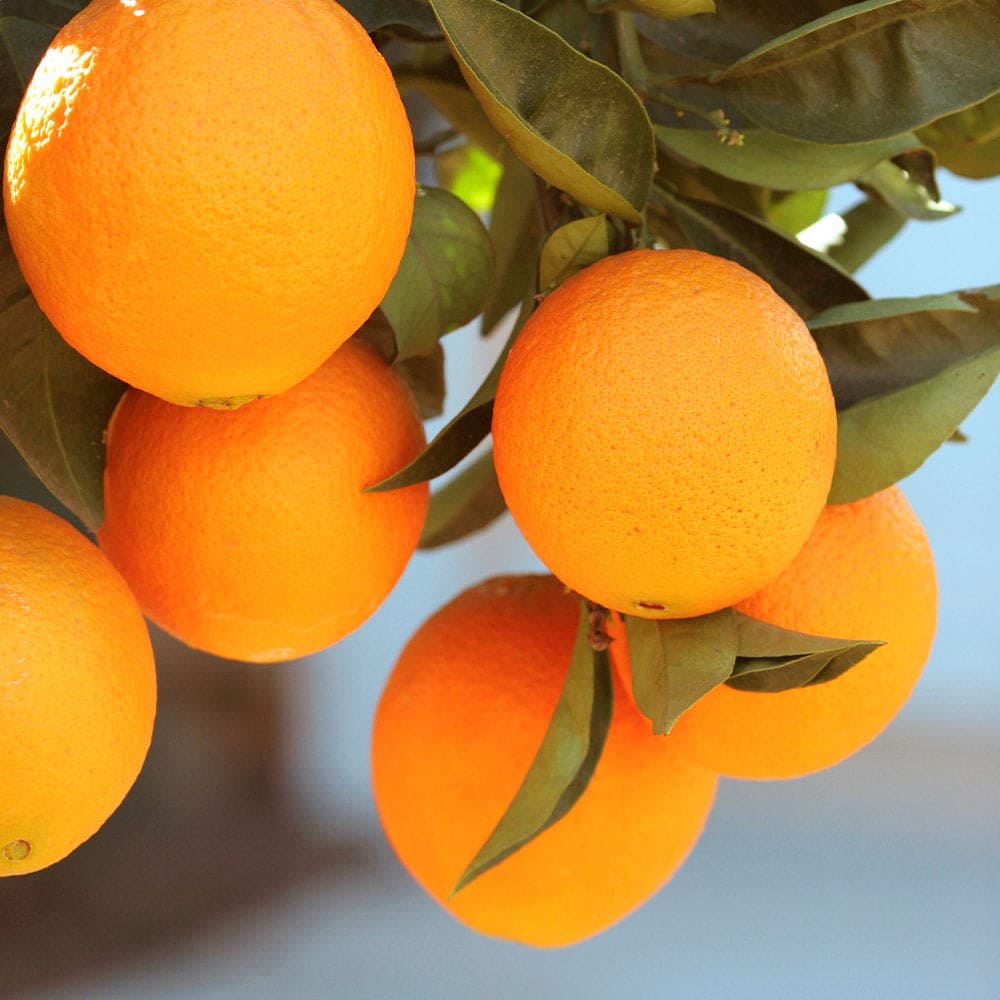
4. Navelina Navel oranges offer an intriguing backstory—they originated as a natural mutation in California in 1910, were exported to Spain for development in 1933, then reintroduced to California in 1990 as an improved variety.
These medium-sized oranges ripen earlier than Washington navels, often by late November, with smooth, reddish-orange skin and exceptionally sweet flavor.

5. Newhall Navel oranges ripen even earlier than Navelina, sometimes as early as late October. They’re slightly smaller than Washington navels but have deeper rind and flesh color, making them particularly attractive. The trees are less vigorous with darker leaves, but the fruit quality is excellent for early-season navels.
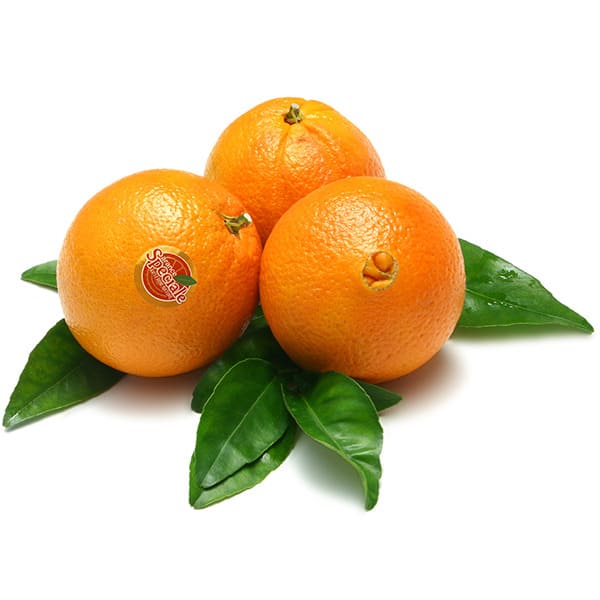
6. Fukumoto Navel oranges represent one of the earliest navel varieties, ripening three to four weeks before Washington navels. Originally from Japan, they’re distinguished by their deep reddish-orange color that develops remarkably early in the season. However, they’re smaller trees that can be more challenging to grow in some climates.
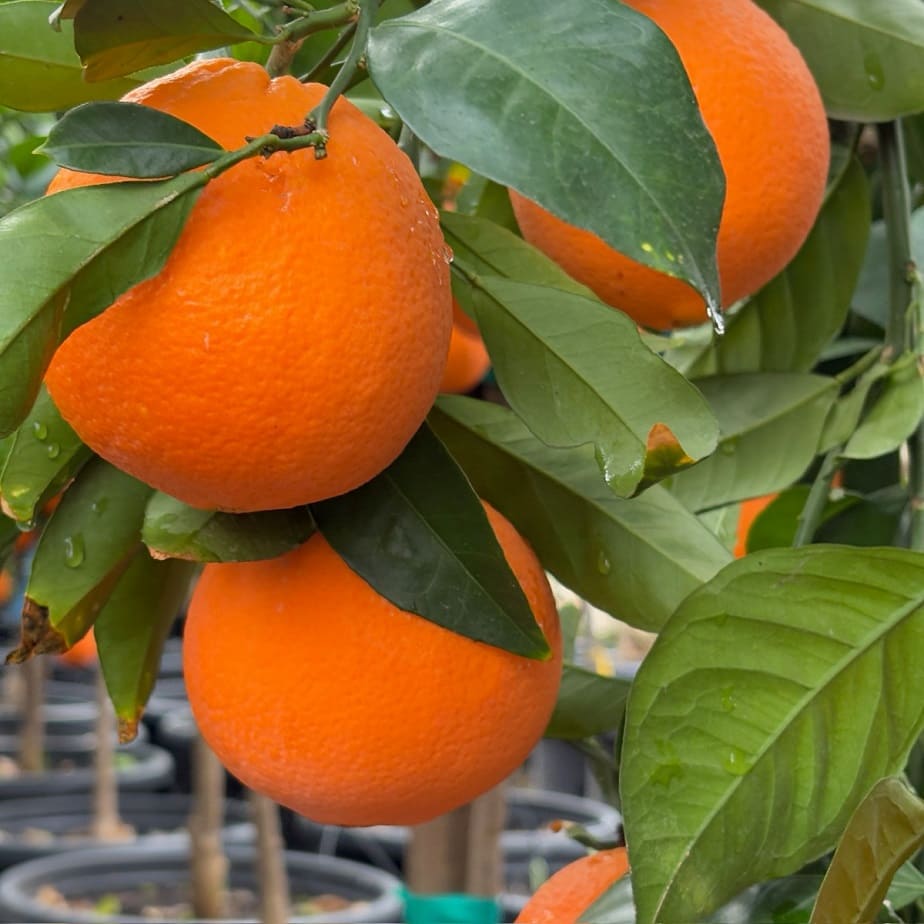
7. Dream Navel oranges are the smallest of the navel varieties but some argue they’re also the sweetest and most delicious. Developed in Florida in the 1930s, these compact fruits pack intense flavor into a smaller package, making them perfect for those who want premium navel taste in a more manageable size.
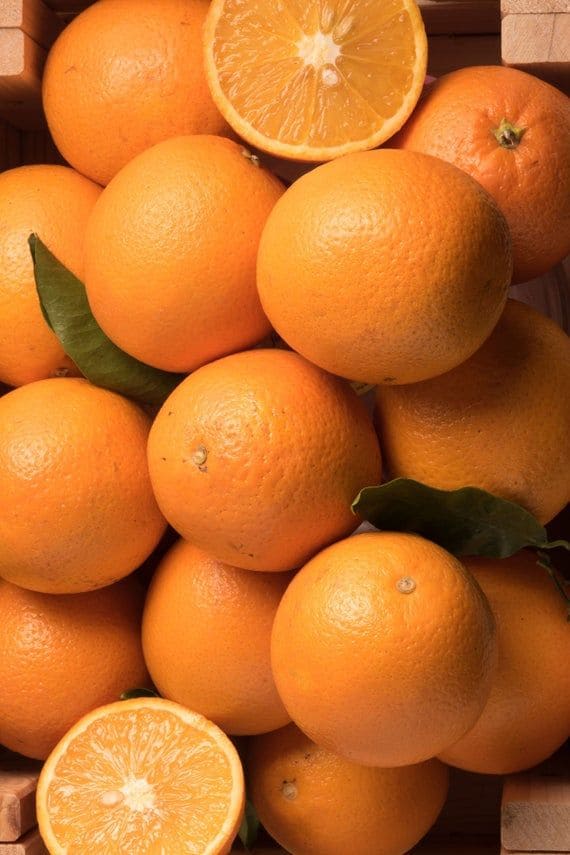
8. Atwood Navel oranges originated as a natural mutation of Washington navel in California around 1935. They’re very similar to their parent variety but develop color slightly earlier and have a smoother rind texture.
They also store exceptionally well on the tree without losing quality, though their early-season quality isn’t quite as good as Washington navel.
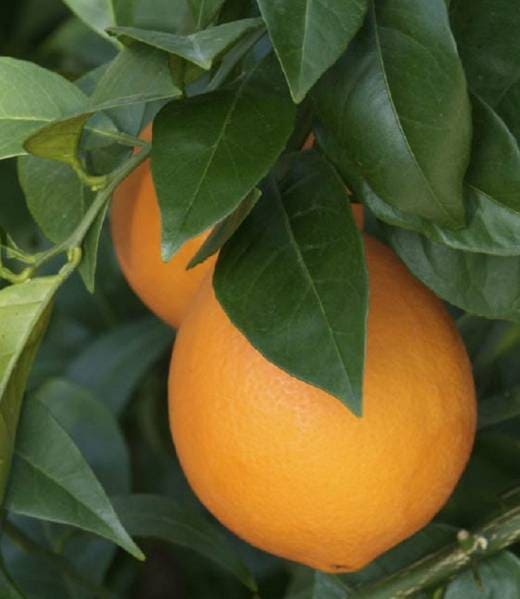
9. Navelate oranges are a Spanish late-season variety discovered as a Washington navel mutation in 1948. These smaller but very juicy oranges ripen 4-6 weeks later than Washington navels and can remain on the tree for up to four months without quality loss. Their smaller navel structure sometimes disappears completely in some fruits.
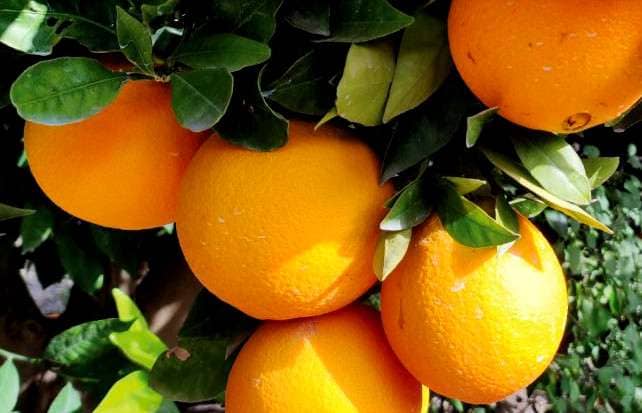
10. Powell Navel oranges represent another Australian contribution to late-season navels. Named “Powell Summer Navel” for their ability to ripen from late April through June, these oranges provide sweet, high-quality fruit when most other oranges are out of season. They have slightly lower sugar content than winter navels but still maintain good flavor balance.
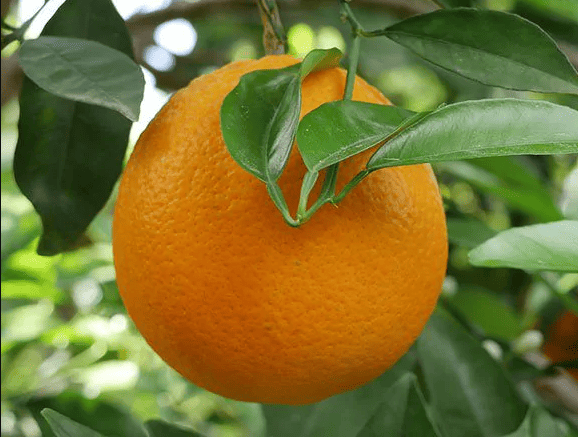
👉 Here are 32+ Types of Melons You Must Try Now: How to Pick, Store & Enjoy Every Type
Valencia Oranges: The Juice Bar Champions
When you think of fresh orange juice, you’re probably thinking of Valencia oranges. These medium-sized fruits with thin, smooth skins are absolutely packed with juice—often containing 50% more juice than their navel cousins. Despite being named after the Spanish city, Valencia oranges were actually developed in California in the mid-1800s.
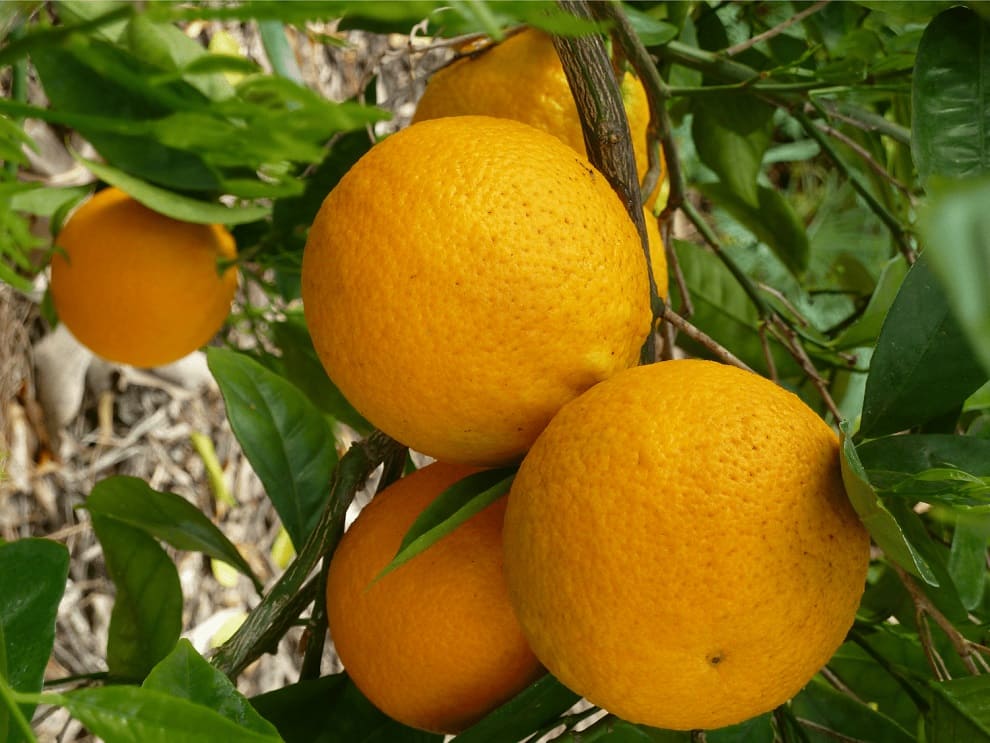
Unlike navels, Valencia oranges contain very little limonin, so their juice stays sweet and fresh-tasting even after storage. This makes them the gold standard for commercial orange juice production worldwide.
The flavor strikes a perfect balance between sweet and tart, with enough acidity to keep things interesting. They do contain seeds, but usually not many—a small price to pay for their exceptional juice quality.
Valencia oranges are unique among major orange varieties because they ripen in summer, from March through July, providing fresh citrus when most other varieties are out of season. Interestingly, the same tree may carry ripe fruit and new blossoms simultaneously, since the fruit takes up to 18 months to fully mature in some climates.
Midknight Valencia is a premium variety that’s even sweeter than regular Valencia oranges, with virtually no seeds. It ripens earlier and holds exceptionally well on the tree without degrading in quality.

The Early Birds: Hamlin and Trovita
Not all sweet oranges wait for winter to shine.
1. Hamlin oranges are among the first to ripen each season, available from October through January. These medium-sized oranges have smooth, thin skin and are moderately seeded, but their claim to fame is exceptional juiciness combined with mild, sweet flavor.
Originally discovered in Florida in 1879, Hamlins are still prized for their reliability and high juice content.
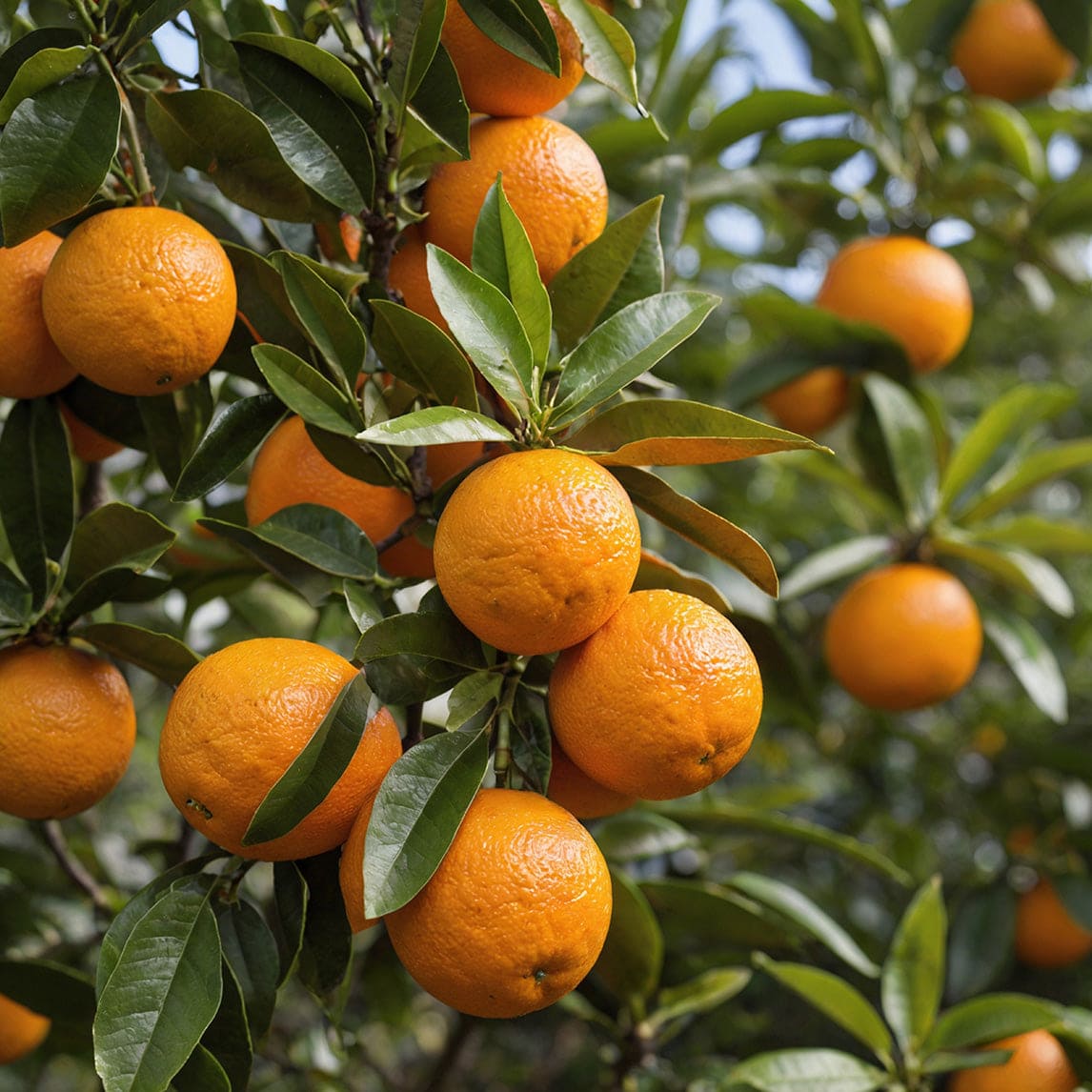
2. Trovita oranges occupy a special place as desert-adapted oranges that thrive in hot, dry climates where other varieties struggle. Smaller and juicier than Washington navels, they offer mild flavor and perform exceptionally well under challenging growing conditions.
Many consider them among the best oranges for areas like Arizona and Southern California’s inland valleys.
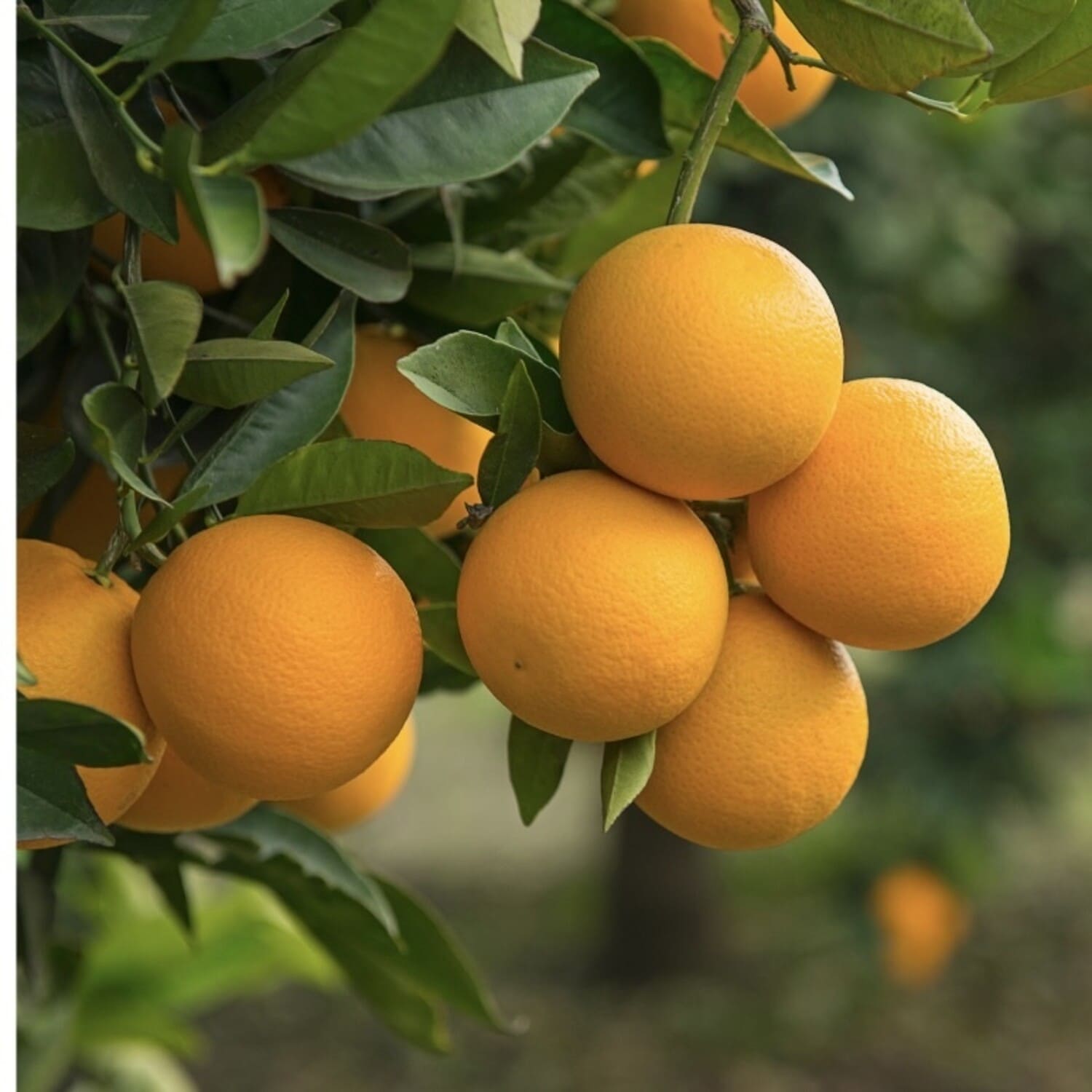
3. Pineapple oranges earned their name not from taste but from their distinctive fragrance, which was reminiscent of pineapples to early growers. These medium-large fruits have excellent juice content with rich flavor and deep color, though they contain 15-25 seeds per fruit.
Originally developed in Florida in the 1860s, they were once the chief mid-season processing orange before seedless varieties gained popularity.
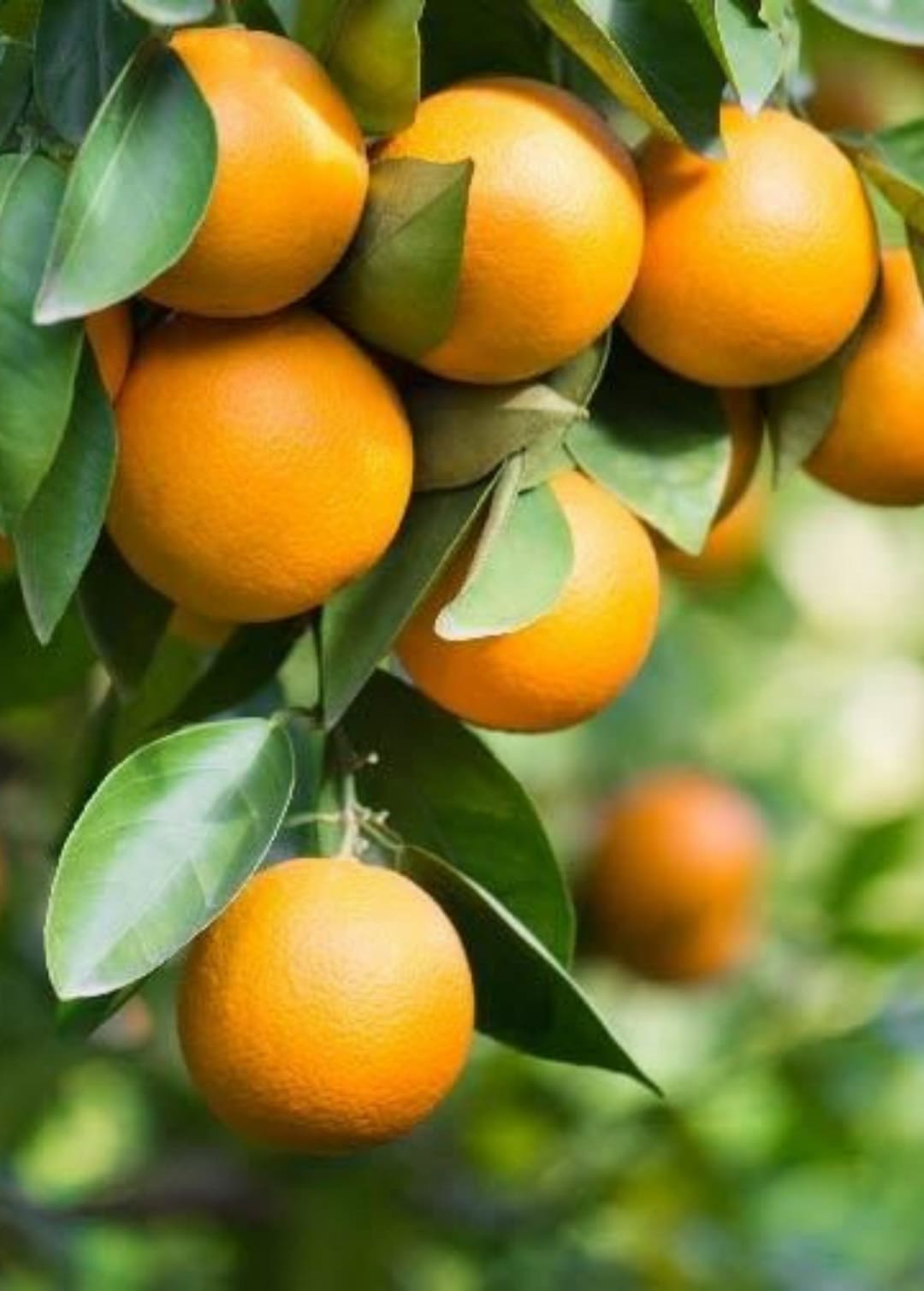
👉 Find out What Are Pink Pineapples? Everything You Need to Know About This Viral Fruit
4. Parson Brown oranges represent one of America’s heritage varieties, discovered in Florida in the 1870s. While they’re rough-skinned with pale juice and moderate seed content, their historical significance as one of the first successful Florida oranges makes them noteworthy. They ripen very early in the season, from October through December.
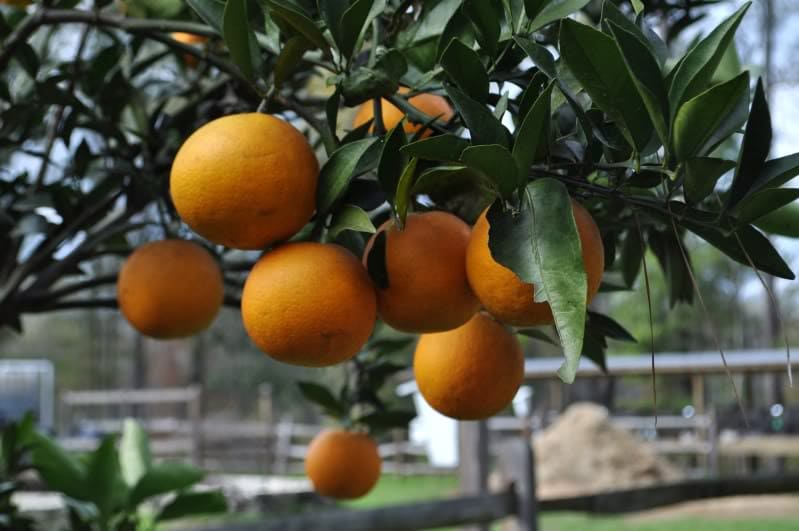
5. Marrs oranges originated in Texas as a mutation of a navel orange, but interestingly, they don’t develop the characteristic navel formation. These medium-large fruits with thin, light orange peels ripen extremely early—often by late October—and are low in acid, making them sweet early in the season. However, they have 7-10 seeds per fruit.
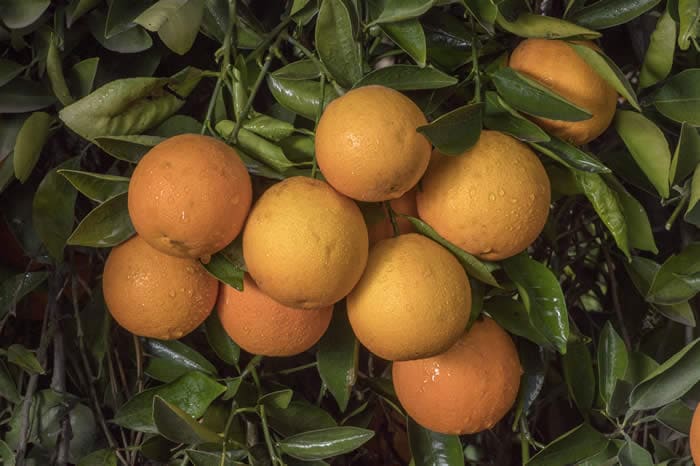
Blood Oranges: The Dramatic Beauties
Blood oranges are nature’s mood rings—their dramatic red coloring develops in response to cool nighttime temperatures during the growing season.
The intensity of the red can vary dramatically, from subtle streaks to deep burgundy flesh that looks almost purple. This happens because cold temperatures trigger the production of anthocyanins, the same antioxidants found in blueberries and red wine.
1. Moro Blood Orange is the most intensely colored variety, with flesh so deep red it’s almost black. The flavor is complex—sweet like a regular orange but with tart, berry-like notes reminiscent of raspberries or cranberries. They’re typically smaller than navel oranges and have few seeds, ripening earlier than other blood varieties.
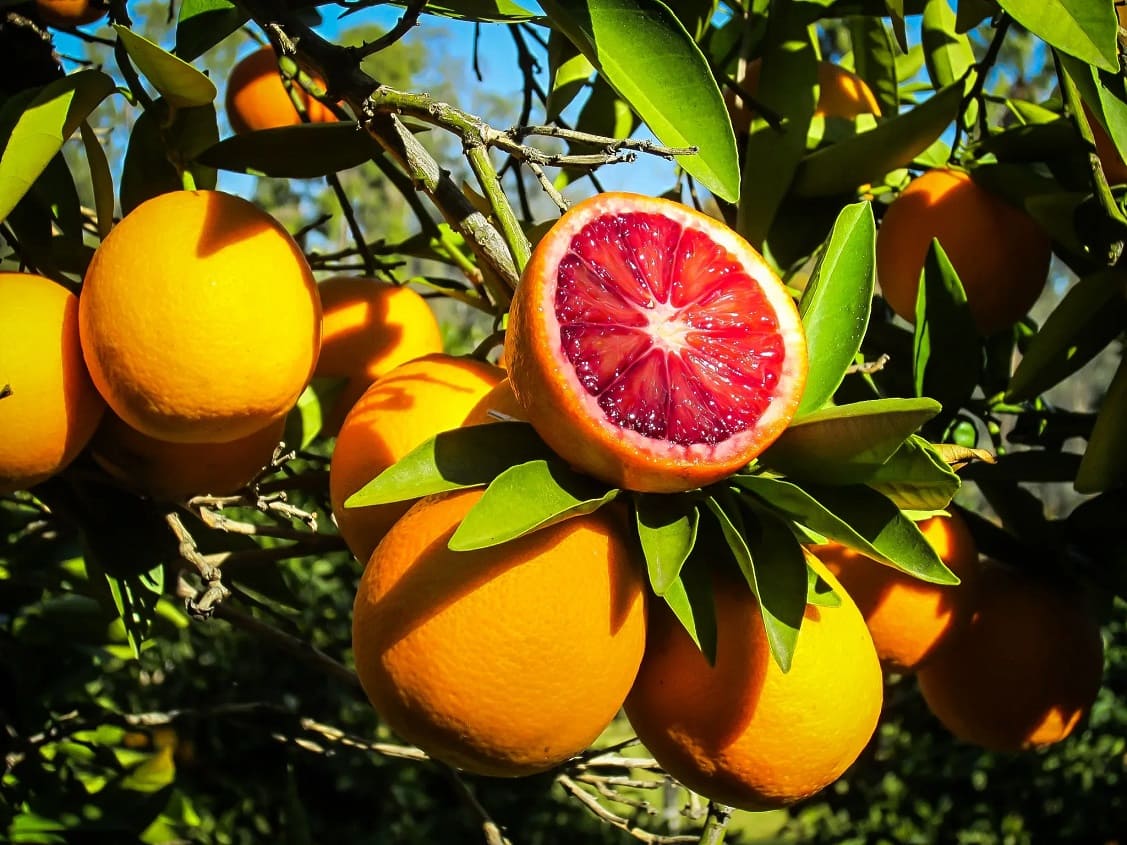
2. Tarocco Blood Orange, considered Italy’s finest variety, offers a more subtle approach. The flesh ranges from orange streaked with red to uniformly pink, and the flavor is exceptionally sweet and aromatic with hints of raspberry. These are larger than Moro oranges and often completely seedless.
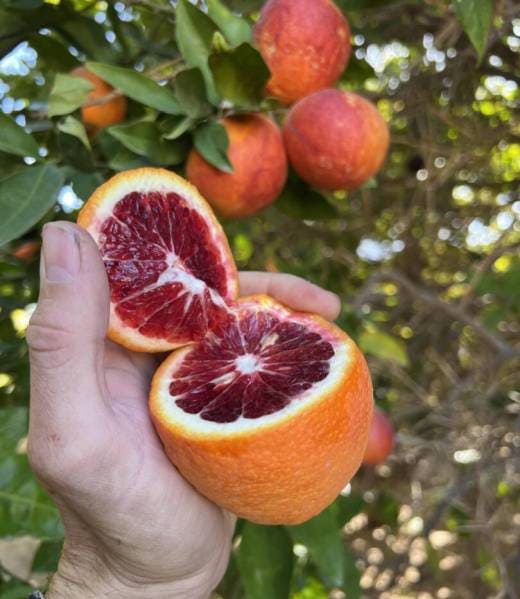
3. Sanguinelli Blood Orange falls somewhere between Moro and Tarocco in both color intensity and flavor. They have smooth, highly colored peels and flesh that’s beautifully streaked with red, with a sweet-tart balance that works wonderfully in both sweet and savory applications.

4. Smith Red Valencia represents an interesting crossover—a blood orange mutation of the Valencia variety discovered in California. It has good-sized fruit with excellent flavor and very few seeds, but what makes it special is its heavy red blush on the skin and deeply pigmented flesh with anthocyanins.
Unlike most blood oranges that finish their season by March, Smith Red can hold well into late spring.
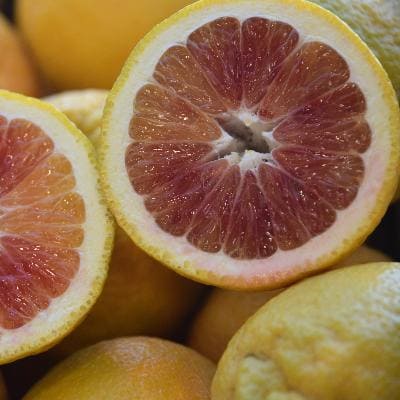
5. Maltese Blood Orange is one of the oldest blood orange varieties, with more regular and distinct red pigmentation that develops reliably in hot, dry areas with cold nights. The small fruit has a blood-red splash on the skin, and the flesh is very juicy though quite seedy compared to modern varieties.
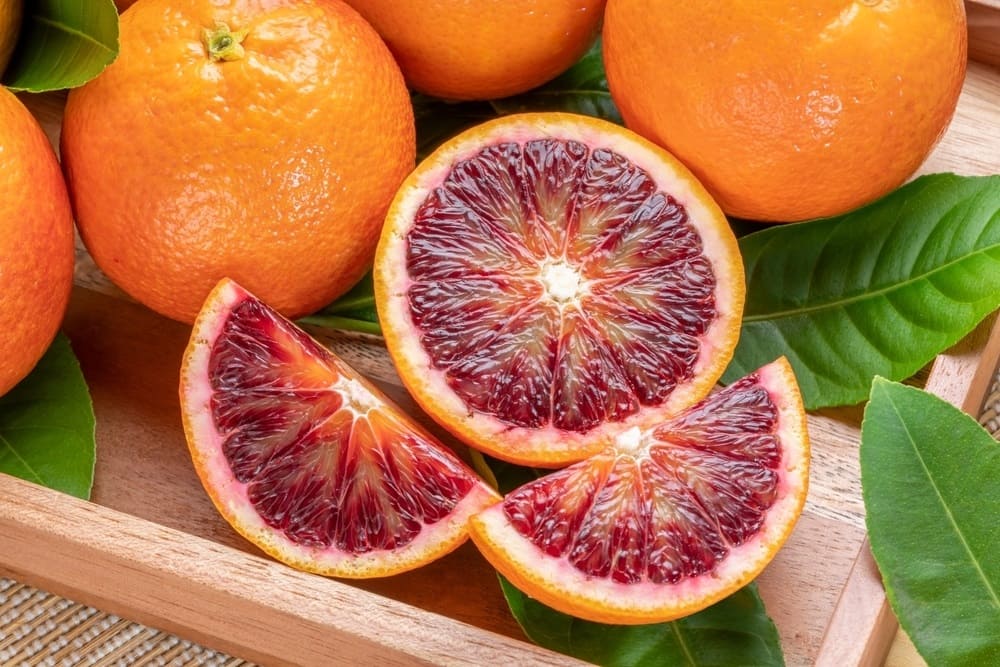
The red coloring makes blood oranges nutritional powerhouses, containing significantly more antioxidants than regular oranges—some studies suggest up to 150 times more antioxidant power than vitamin C alone.
The Sweet Mysteries: Acidless Oranges
One of the most unusual categories in the orange world is acidless oranges, also called sweet limes or sugar oranges. These varieties contain almost no acid—sometimes as little as one-tenth the acidity of regular oranges. The result is fruit that’s intensely sweet but lacks the bright, tangy notes that make most citrus so refreshing.
1. Lima oranges are the most common acidless variety, popular in Mediterranean countries and parts of Asia. While their extreme sweetness appeals to some palates, their low acid content means they spoil more quickly than regular oranges and have a shorter shelf life.
The lack of natural preserving acids also gives them a flatter flavor profile that many Western palates find unusual.
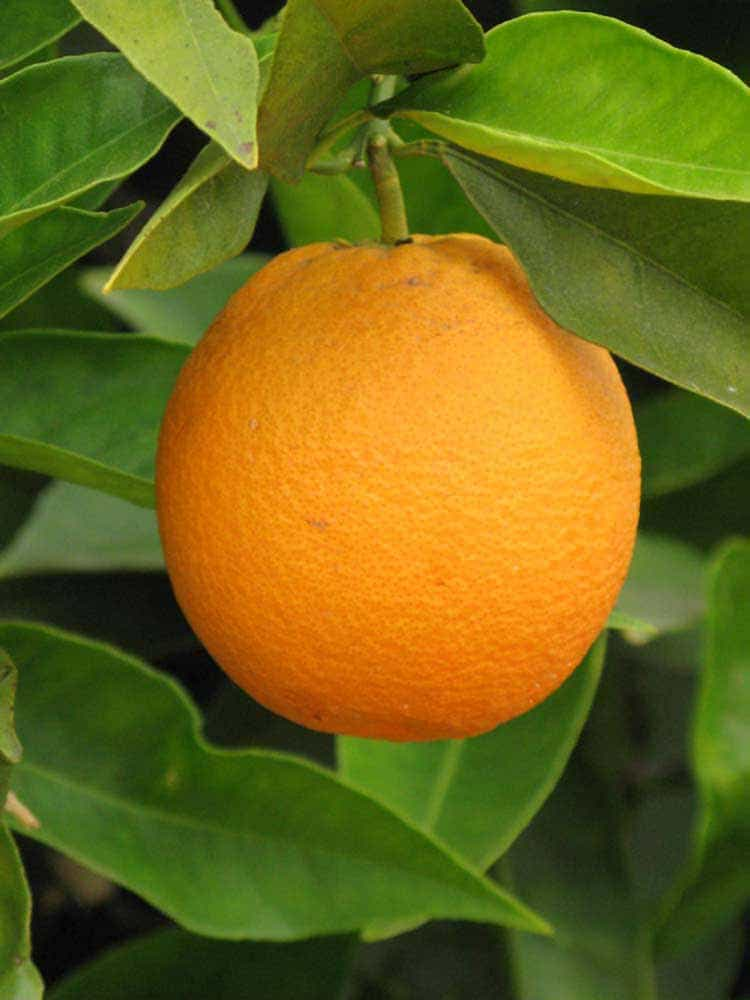
2. Vaniglia Sanguigno oranges represent a fascinating hybrid category—they’re acidless blood oranges with pink flesh colored by lycopene rather than anthocyanins.
These medium-sized oranges are very juicy and particularly prized in Middle Eastern cuisine, where their extreme sweetness and unique coloring make them valuable for both fresh eating and juice production.
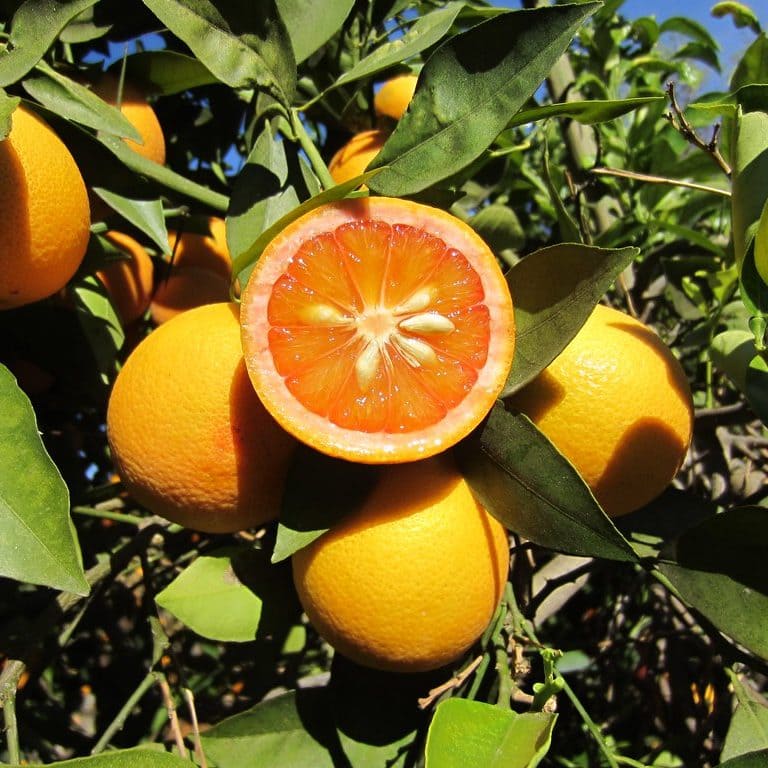
Mediterranean Heritage Varieties
Spain has contributed significantly to orange diversity, developing several varieties that excel in Mediterranean climates and offer unique characteristics not found in more common varieties.
1. Salustiana oranges tell a wonderful story of local discovery and global success. In 1950, a natural mutation was discovered in a convent garden in Enova, Valencia, by Don Salustiano Pallas. This mutation created oranges that ripened in winter rather than summer, had finer pulp, and were sweeter than the parent Valencia variety.
Today, Salustiana oranges are highly prized in Spain and exported worldwide, representing over 250,000 metric tons of annual Spanish production.
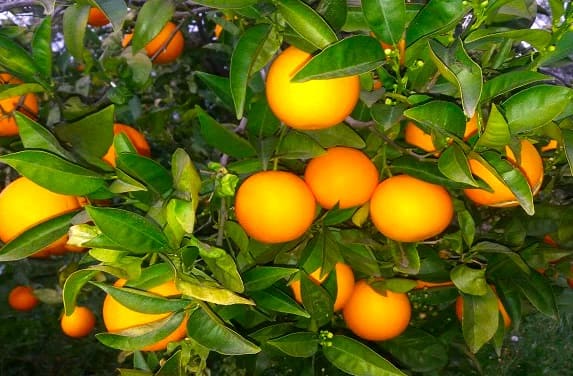
2. Cadenera oranges rank among Spain’s most important commercial varieties. These medium-sized, nearly seedless oranges have smooth to finely pebbled skin and extremely juicy flesh with excellent flavor and aroma. They mature in November, making them one of the earliest Spanish varieties, and hold well on trees while retaining quality.
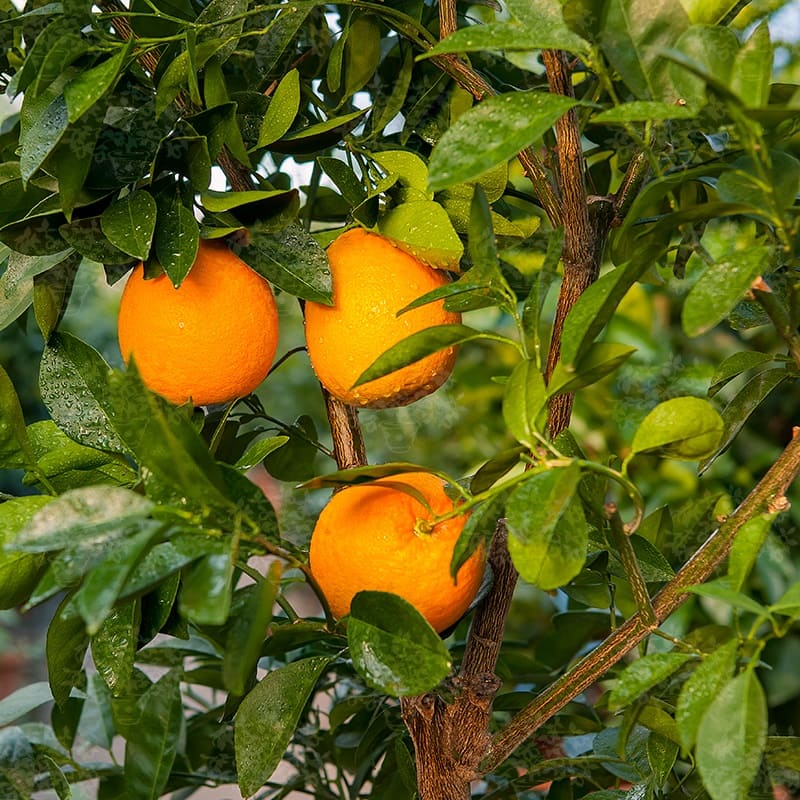
3. Jaffa oranges (also called Shamouti) originated in Palestine and became internationally famous for their superior quality and sweetness.
These round oranges have bright orange skin, thick but easily peelable rind, and nearly seedless, very sweet flesh with a distinctive honey-like flavor. The Israeli citrus industry still uses the Jaffa trademark for their premium oranges.
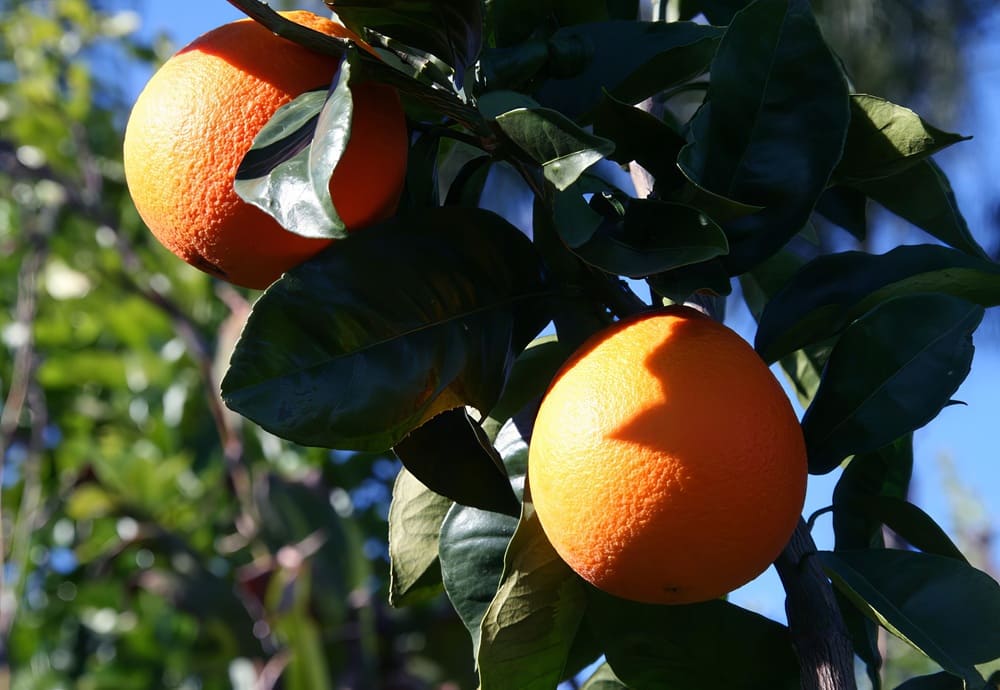
4. Belladonna oranges from Italy are prized for their alternating production cycles and extremely sweet flavor due to high sugar content that increases in the final ripening stages. The thick peel has excellent properties for both fresh consumption and industrial processing, while the flesh is very high in vitamin C and other nutrients.
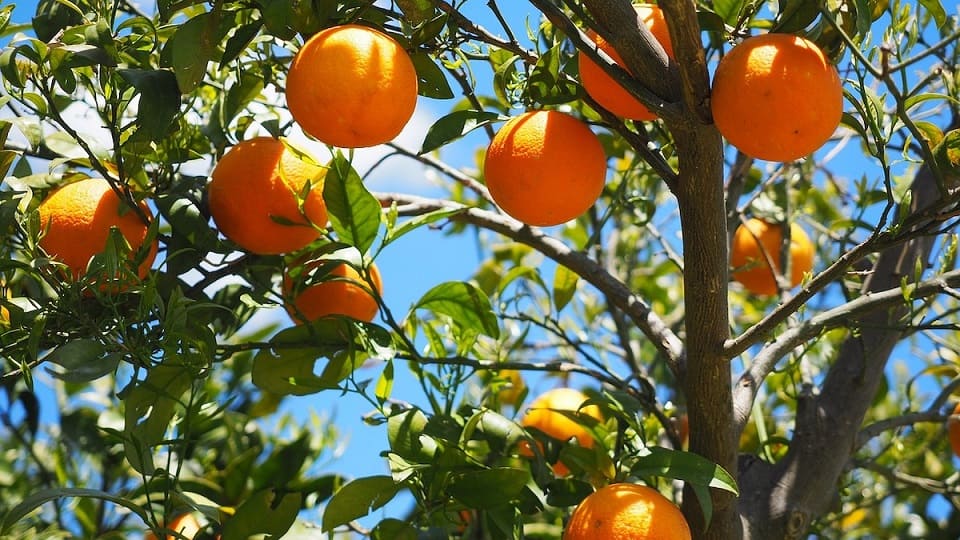
5. Ovale oranges (also called Calabrese) represent one of Italy’s distinctive regional varieties. These blonde oranges have an characteristic oval shape with a thin groove at the bottom, and thin but tough skin with colors ranging from yellow to orange.
They’re known for their late spring ripening (March-May) and ability to hang on trees until late May while maintaining quality. The sweet, pleasant flavor comes from high sugar content balanced with pungent acidity.
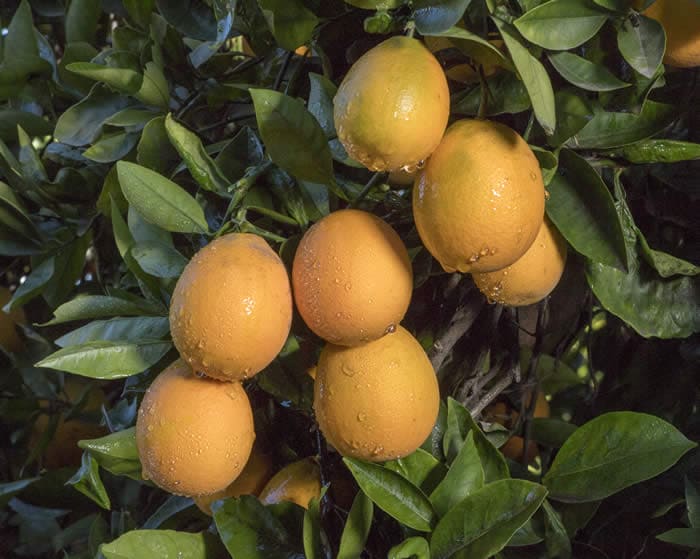
6. Comuna oranges are among the oldest Mediterranean blonde varieties, though their exact origin is unknown. These medium-large, very juicy oranges mature in December in Spain and have been an important variety historically. However, their seedy nature has led to declining popularity as seedless varieties have become preferred.
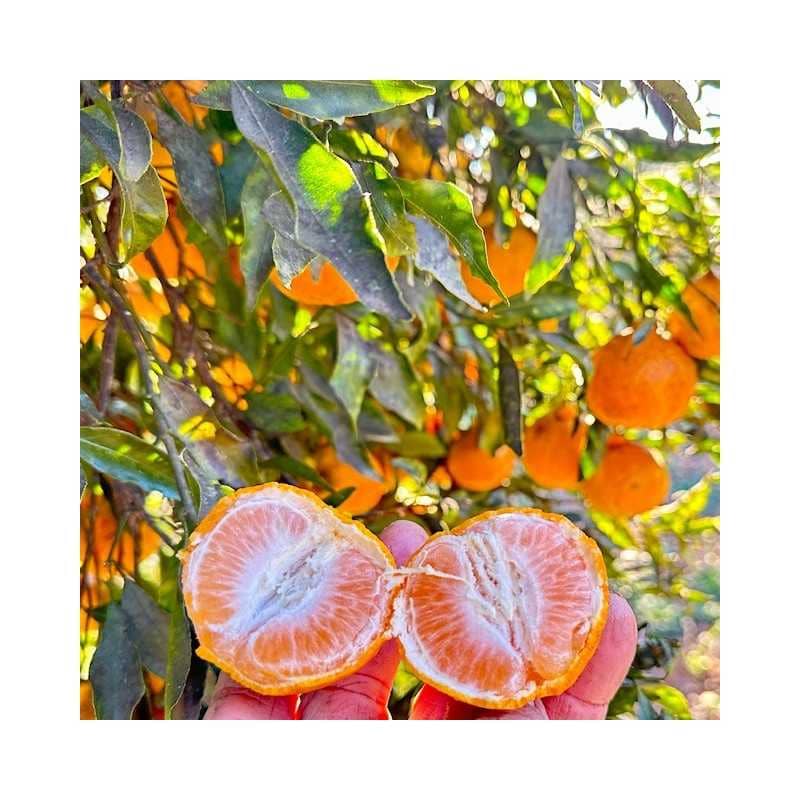
7. Castellana oranges are another Spanish blonde variety with medium-sized, subglobose fruits that have pale orange color and somewhat granular skin texture. The pale flesh is very juicy with low acidity and sweet flavor, maturing in November in Spain. They’re particularly important in Spain’s Almería Province.
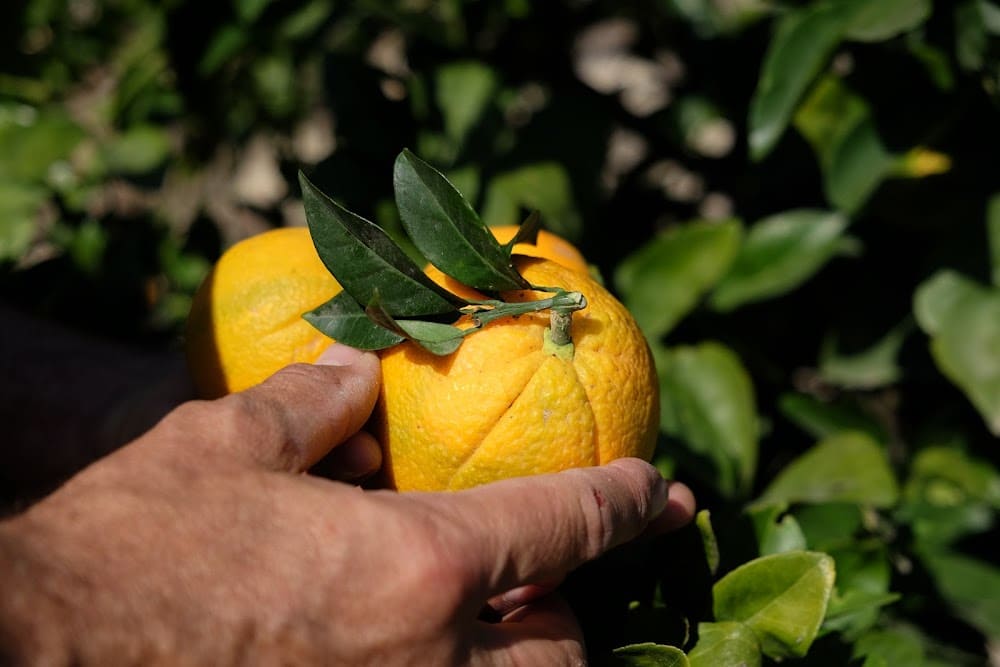
8. Berna oranges (also called Verna) are distinctively late-maturing Spanish oranges that can hang on trees as well as or better than Valencia oranges but are smaller and of generally lower quality.
These medium-small fruits are virtually seedless with finely pebbled skin, and while they mature very late (end of March), they can regreen during summer heat.
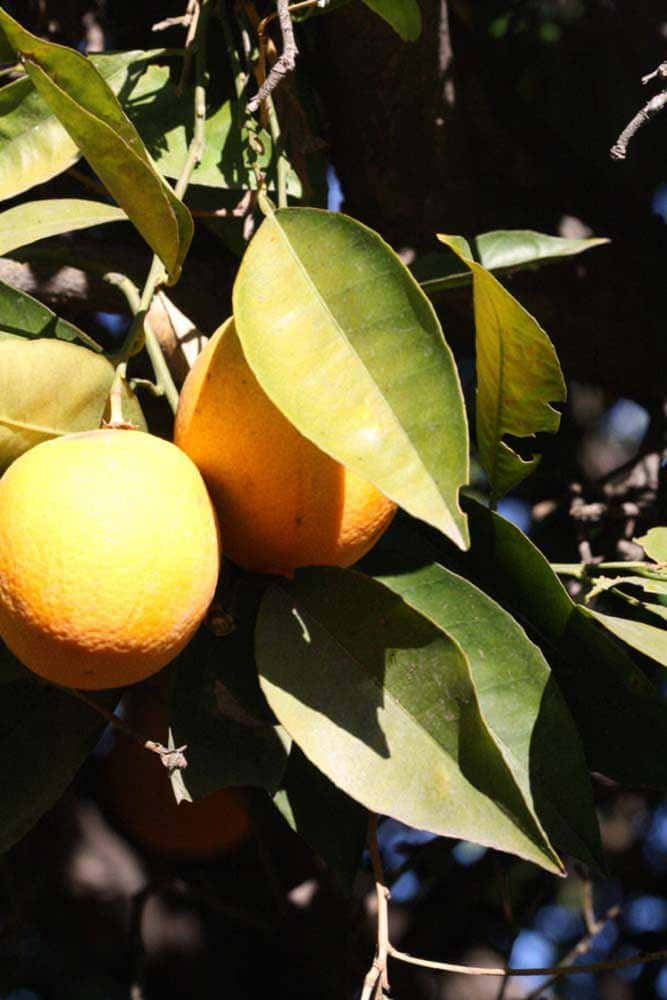
Tangor Oranges: The Sweet Hybrids
Tangors represent successful crosses between tangerines and sweet oranges, combining the best characteristics of both parent fruits. These hybrids offer unique flavor profiles and growing characteristics that set them apart from both pure oranges and pure mandarins.
1. Temple oranges are often called “Royal mandarins” despite being true tangors. Discovered in Jamaica in 1896, these medium-sized fruits have deep orange, somewhat pebbly skin that’s relatively easy to peel.
The bright orange flesh is exceptionally juicy with a rich, sweet flavor balanced by just enough acidity to provide complexity. Temple oranges require warm climates to develop their full sugar content and are particularly popular in Florida.
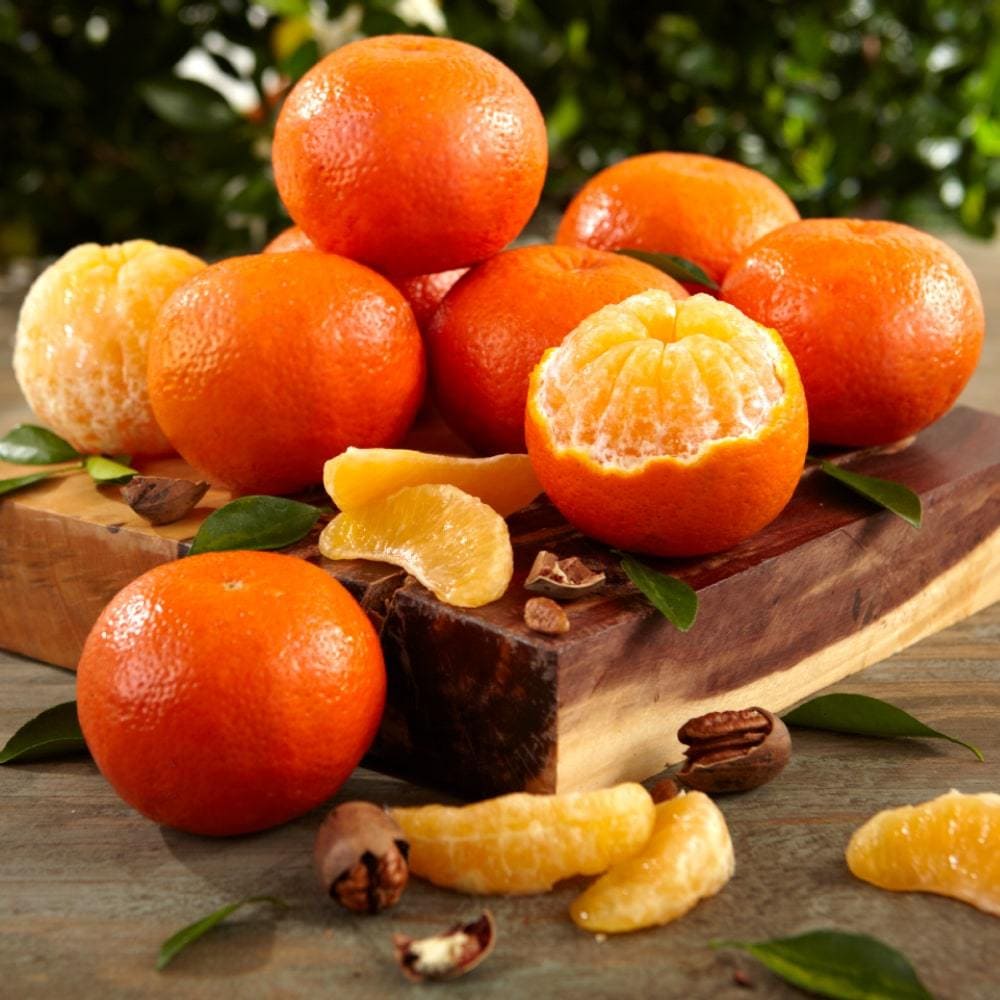
2. Ortanique oranges get their name from a combination of “orange,” “tangerine,” and “unique”—which perfectly describes this natural tangor discovered in Jamaica. These medium-large fruits have slightly bumpy, dark orange skin that fits more tightly than typical mandarins, making them somewhat harder to peel.
The flesh is exceptionally juicy with rich, sweet flavor, though the fruits become quite seedy when cross-pollinated. Ortanique oranges are late-maturing and hold very well on the tree.
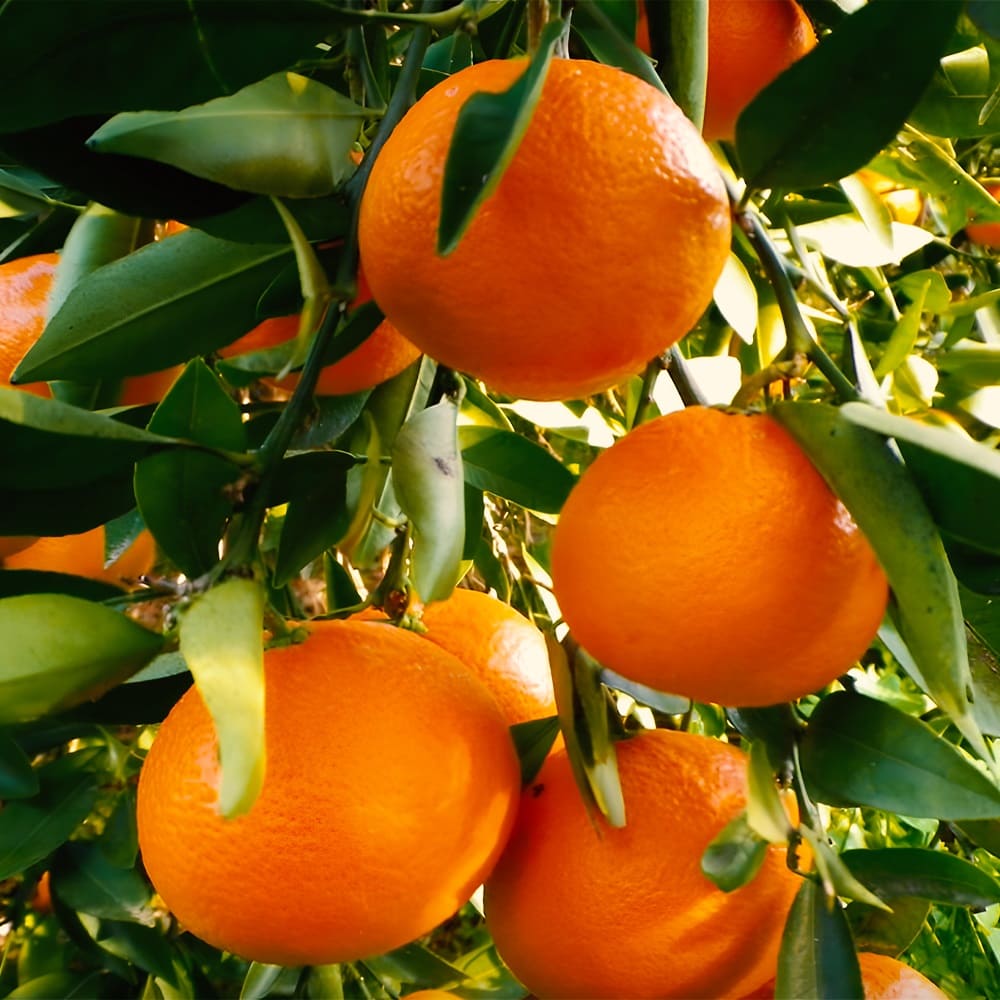
Specialty and Rare Varieties
Some orange varieties occupy unique niches in the citrus world, either due to their specialized growing requirements, limited availability, or distinctive characteristics that set them apart from mainstream varieties.
1. Jincheng oranges, known locally as “Golden Orange” in China, represent an important Chinese variety that’s well-suited for high-quality juice production.
These small, round fruits typically have only ten segments and some seeds, with thick, easy-to-peel rinds and sweet, light orange pulp that has subtle lime undertones. Their aromatic rind oil makes them valuable for essential oil production as well as juice.
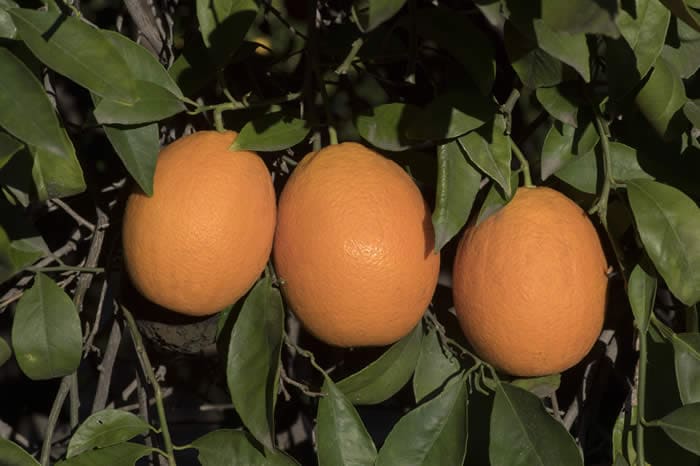
2. Trifoliate oranges are among the most unusual in the orange family, native to northern China and Korea. These tiny oranges are distinctively fuzzy or downy, quite unlike any other orange variety.
They’re extremely cold-hardy and are most often used to make marmalade rather than eaten fresh. Their unique texture and small size make them more of a curiosity than a commercial variety.
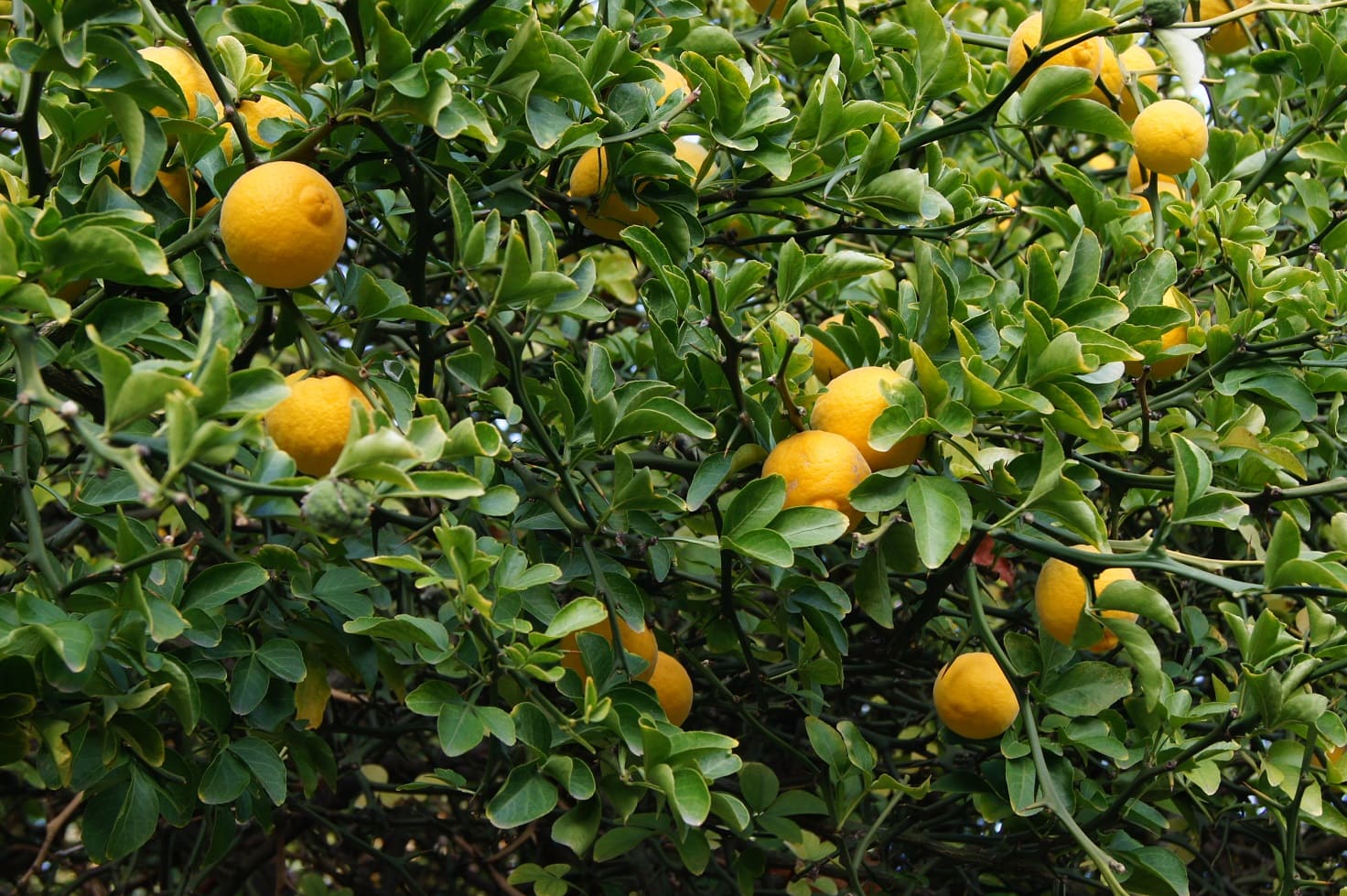
3. Rotuma Island oranges come from a small volcanic island in Fiji and represent one of the more exotic orange varieties. These oranges occur naturally throughout the island and are prized locally for their sweet, juicy flesh with complex spicy flavor. They’re also used to make traditional fermented orange wine consumed during celebrations.
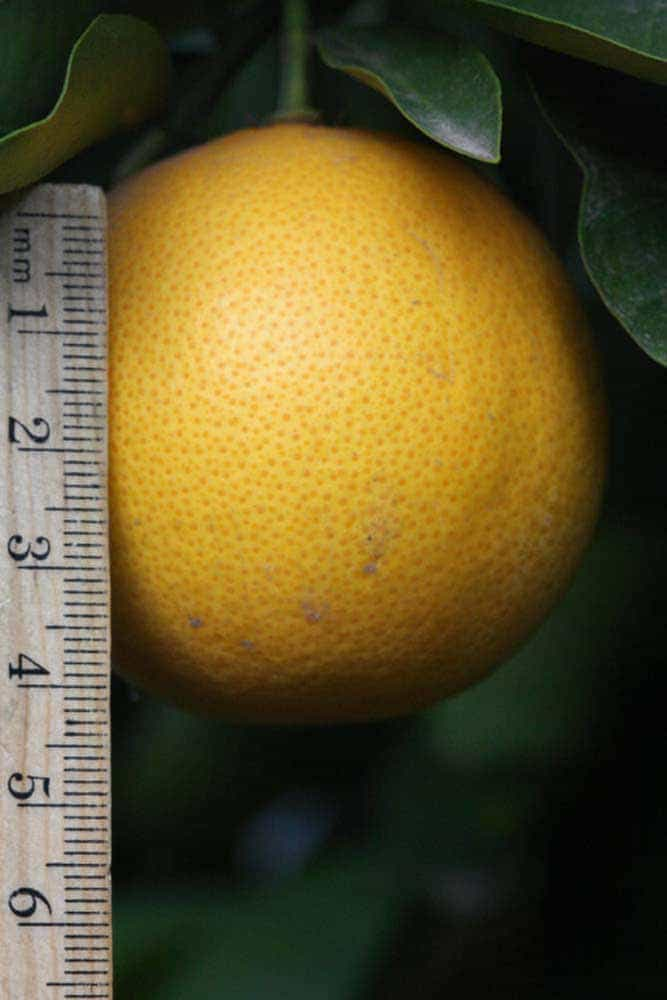
The Mandarin Family: Easy-Peeling Delights
Mandarins bridge the gap between full-sized oranges and convenient snacking fruit. These smaller, typically sweeter fruits have loose skins that make them incredibly easy to peel—perfect for lunch boxes, quick snacks, and any time you want citrus without the commitment of a full-sized orange.
Clementines: The Kids’ Choice
Often marketed as “Cuties,” “Halos,” or “Sweeties,” clementines are the smallest members of the mandarin family. They’re incredibly sweet, virtually seedless, and have thin, glossy skins that practically fall off the fruit. A hybrid between a mandarin and sweet orange, clementines were first discovered in Algeria in the early 20th century.
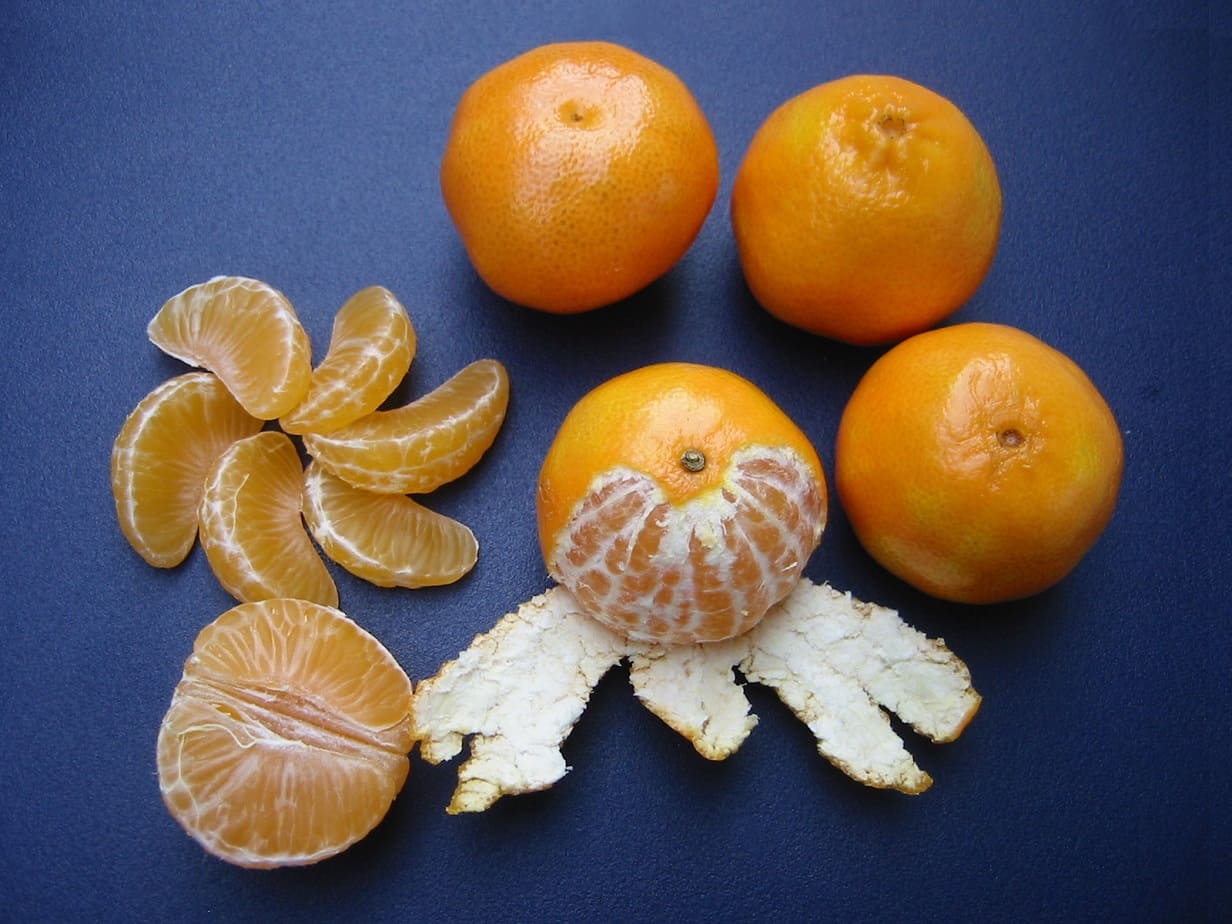
The sweetness is almost candy-like, with very low acidity. This makes them irresistible to children and adults with a sweet tooth, though some find them lacking in the bright, tart notes that make citrus so refreshing. Their peak season runs from November through January, though “Summer Cuties” extend availability year-round.
Tangerines: The Traditional Choice
True tangerines have a more complex flavor than clementines—still sweet, but with enough acidity to provide a nice tart bite. They’re slightly larger than clementines, with deeper orange color and skin that can be more textured or pebbly. The name comes from the Moroccan port of Tangier, where they were first shipped to Europe.
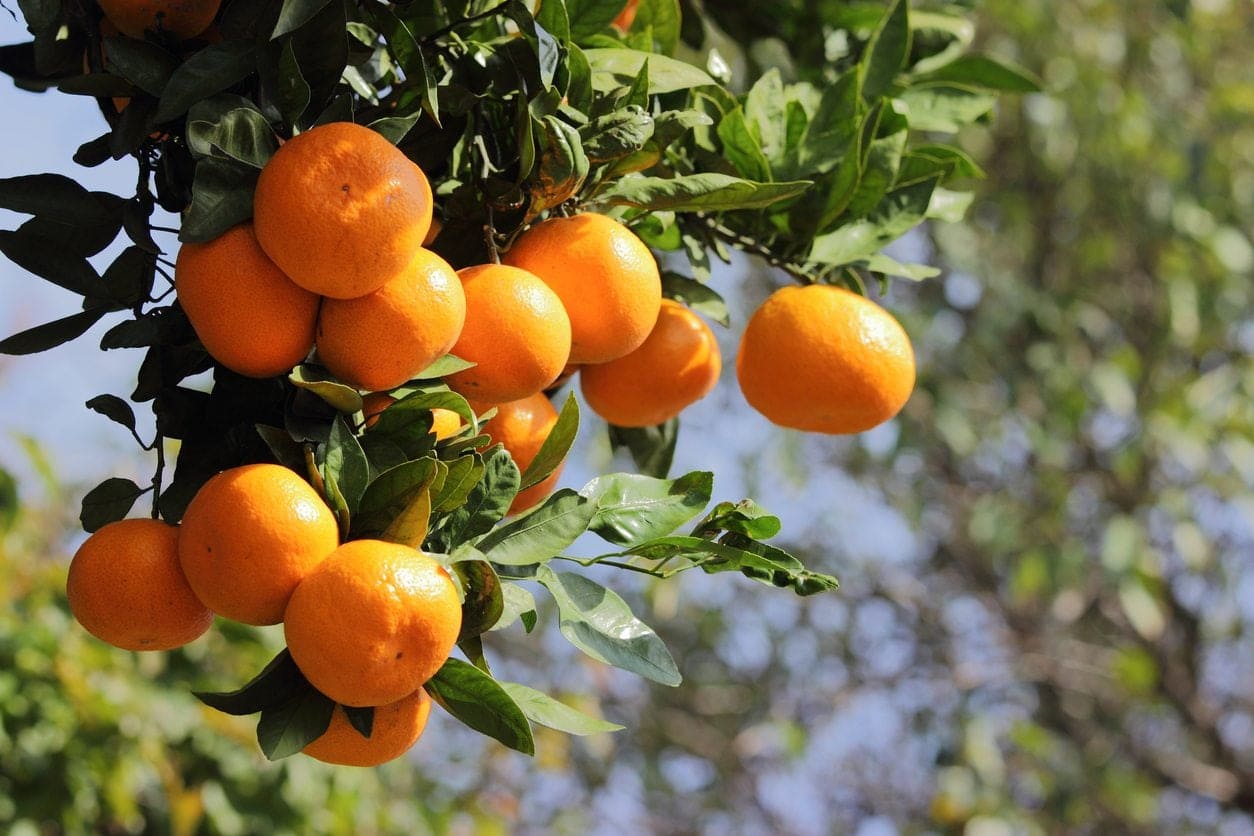
Dancy tangerines, sometimes called Christmas tangerines due to their peak December availability, have particularly intense flavor and aroma. They’re smaller than some other tangerine varieties but pack more complex, spicy citrus notes.
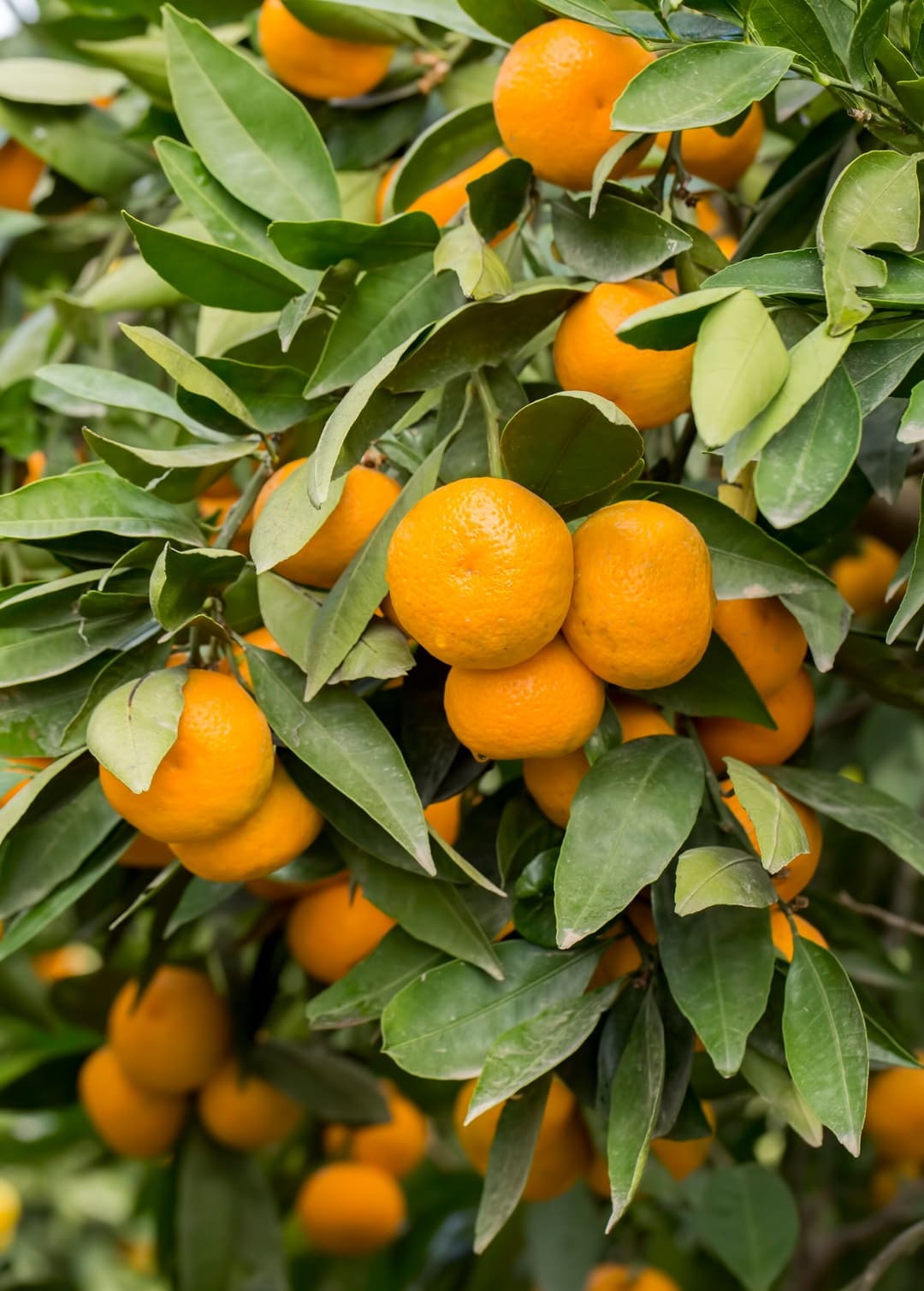
The flavor is more “orangey” than clementines, making them better for cooking applications where you want distinct citrus flavor rather than just sweetness.
Satsumas: The Cold-Hardy Champions
Satsumas are the most cold-tolerant of all citrus fruits, able to survive temperatures that would kill other orange varieties. This makes them popular in areas like the Gulf Coast states where other citrus won’t survive winter. They have incredibly loose, easy-to-peel skin and sweet, tender flesh that’s usually seedless.
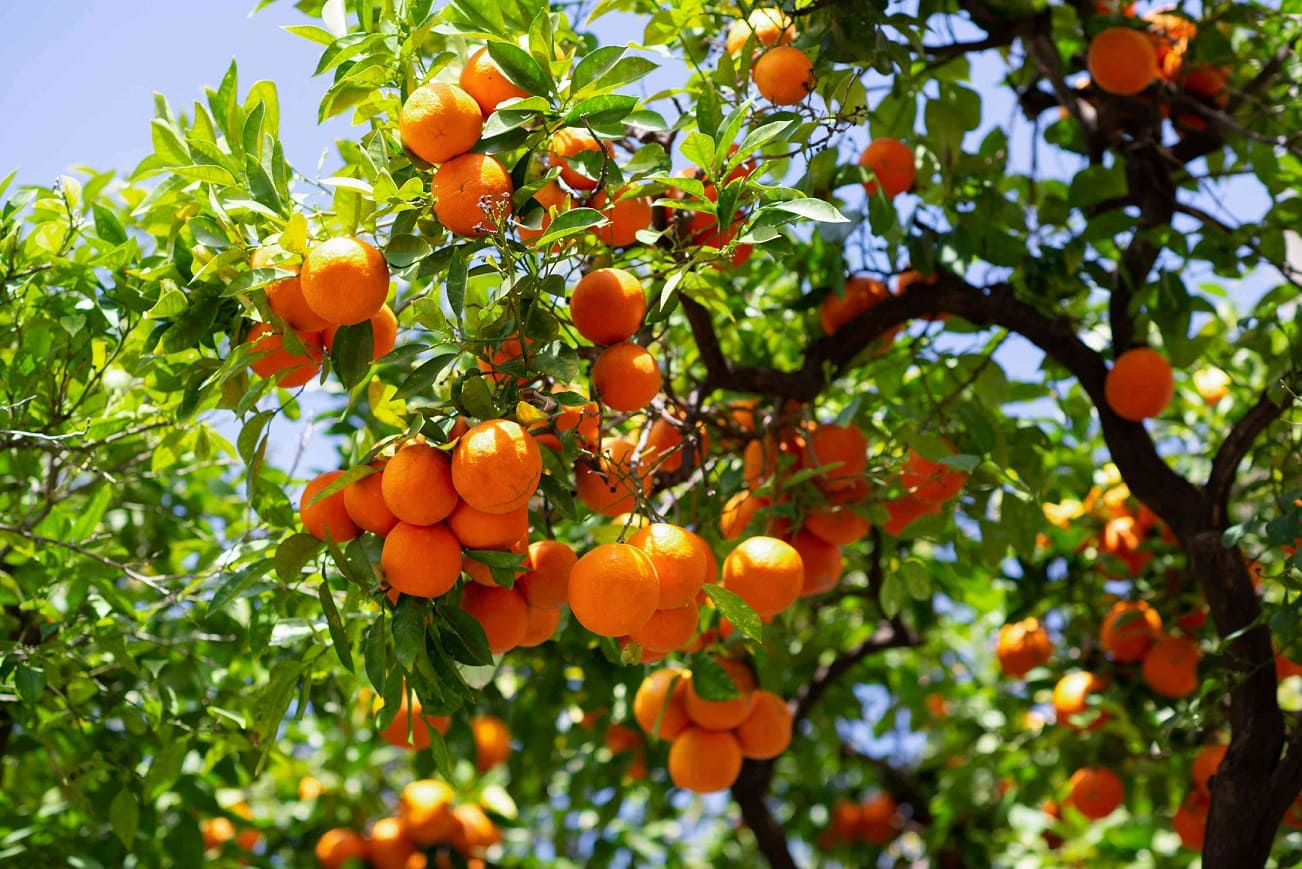
The flavor is mild and sweet with very low acidity—some describe it as almost bland compared to other citrus, but others find this mellow quality perfect for gentle morning snacking. Satsumas are also unique in that they often mature before they develop full orange color, so don’t be fooled by greenish skin if the fruit feels soft and heavy.
Premium Mandarins: Sumo Citrus
At the luxury end of the mandarin spectrum sits Sumo Citrus (known as Dekopon in Japan), one of the most expensive and sought-after citrus varieties in the world. These large mandarins have a distinctive bump on top that resembles a sumo wrestler’s topknot, hence the name.
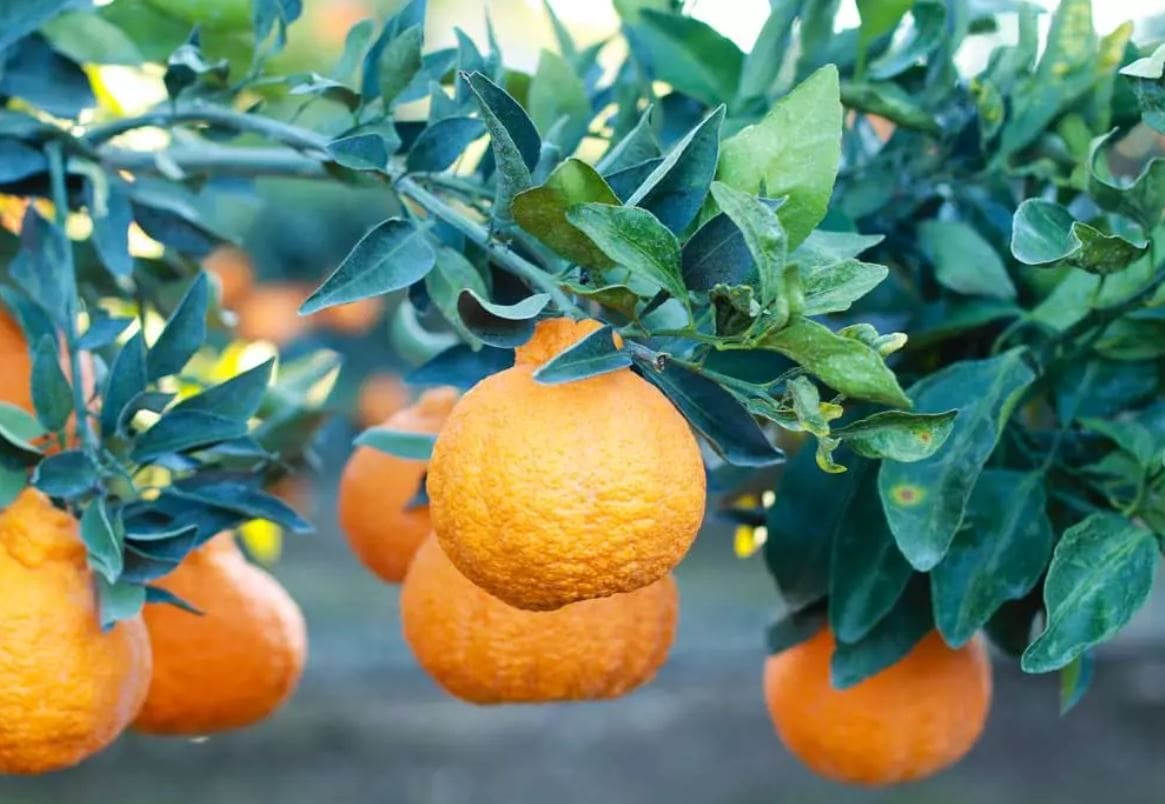
Sumo Citrus requires an incredibly labor-intensive growing and curing process. After harvest, the fruit is stored for 20-40 days to reduce acidity and concentrate sugars, resulting in exceptionally sweet, complex flavor. The skin is easy to peel despite the fruit’s large size, and the flesh is seedless with a satisfying, substantial texture.
Tangelos: The Hybrid Wonders
Tangelos represent some of the most successful citrus breeding experiments, crossing tangerines with grapefruits or pomelos to create fruit with unique characteristics.
1. Minneola tangelos, often called Honeybells, are easily recognized by their distinctive bell shape and pronounced “nipple” at the stem end.
These bright orange fruits offer intense, sweet-tart flavor with exceptional juiciness. They’re larger than most mandarins but still easy to peel, though the skin can be tighter than true mandarins. Their peak season runs from December through March, making them a bright spot in winter fruit selections.
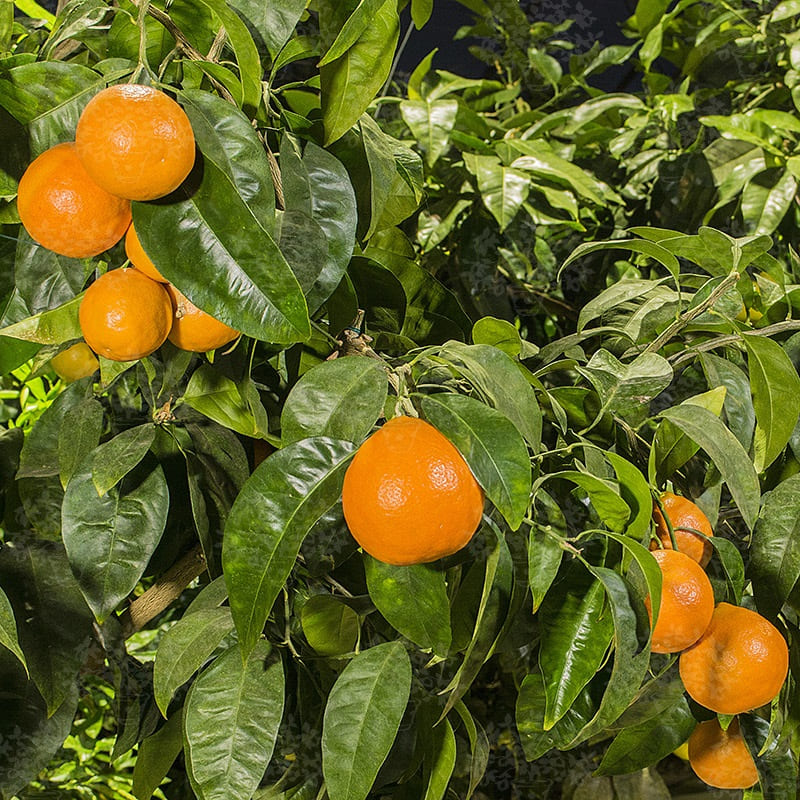
2. Orlando tangelos are rounder than Minneolas and slightly smaller, with very juicy flesh and a sweet-tart flavor that works beautifully in both sweet and savory applications.
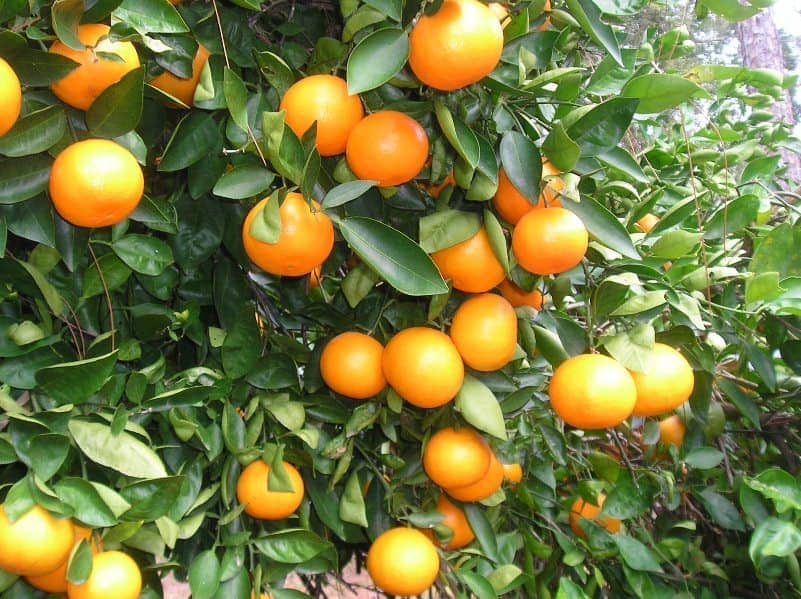
Bitter Oranges: The Culinary Specialists
Seville Oranges: The Marmalade Masters
Seville oranges are the workhorses of the citrus world. Too sour to eat fresh, they’re absolutely essential for traditional British marmalade, where their high pectin content and bitter flavor create the perfect balance with sugar.
These oranges have rough, thick skins and very seedy, sour flesh, but that bitterness adds complexity to cooked dishes that sweet oranges simply can’t match.
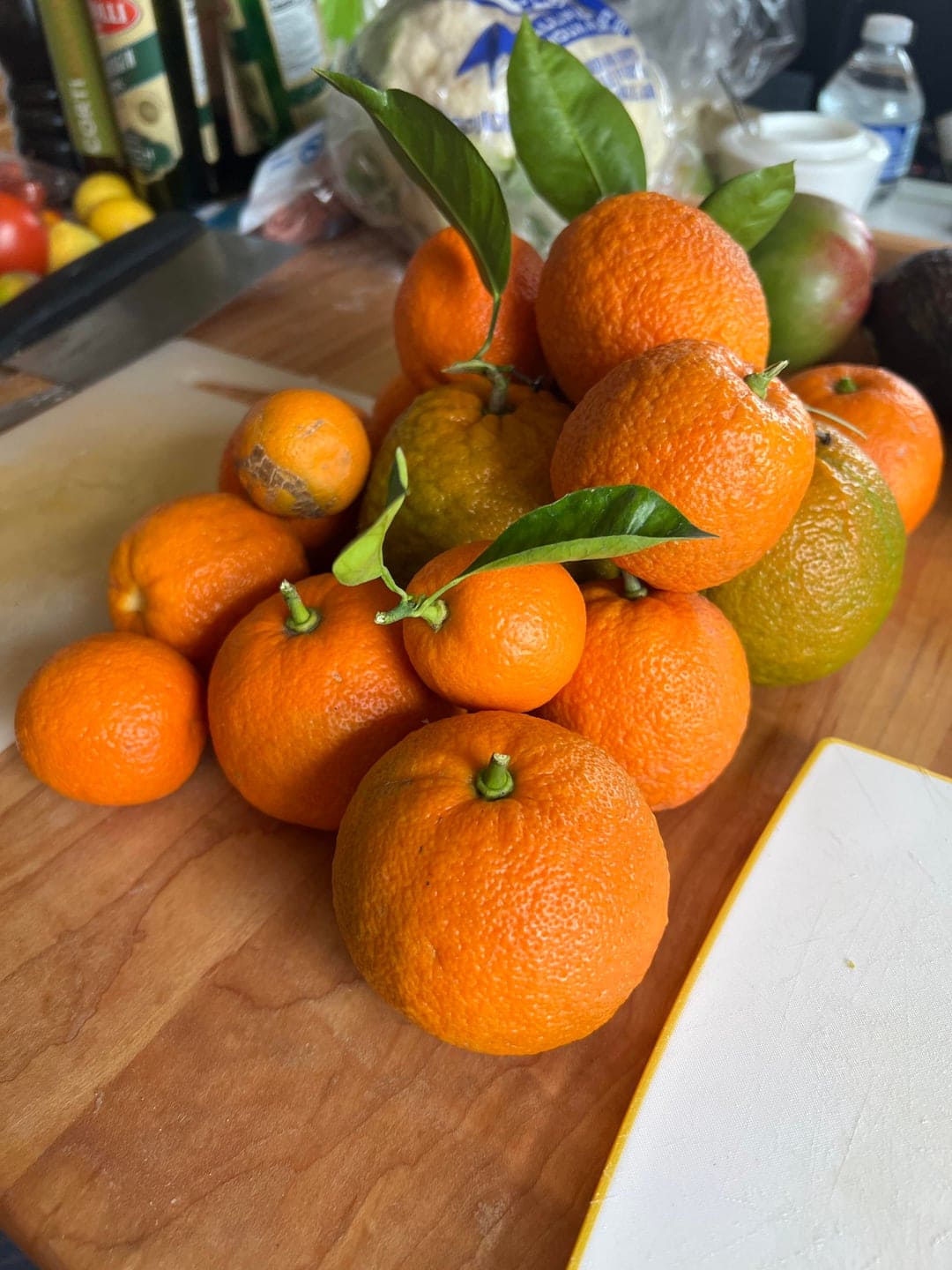
The high pectin content makes Seville oranges natural thickeners, which is why they’re preferred for preserves and jellies. Their intense, complex flavor also makes them valuable in savory cooking—their juice works wonderfully in marinades for pork, in salad dressings, and in sauces where you want bright acidity with depth.
Seville oranges have a frustratingly short season, available only from December through February, which makes them highly prized when they appear in markets.
Bergamot Oranges: The Earl Grey Stars
Bergamot oranges are grown primarily for their intensely aromatic oil, which gives Earl Grey tea its distinctive flavor. The fruit itself is too bitter to eat, but the oil extracted from the peel is liquid gold for perfumers and tea blenders.
These small, somewhat pear-shaped fruits have bumpy, yellow-green skin that releases incredibly fragrant oils when scratched or zested.
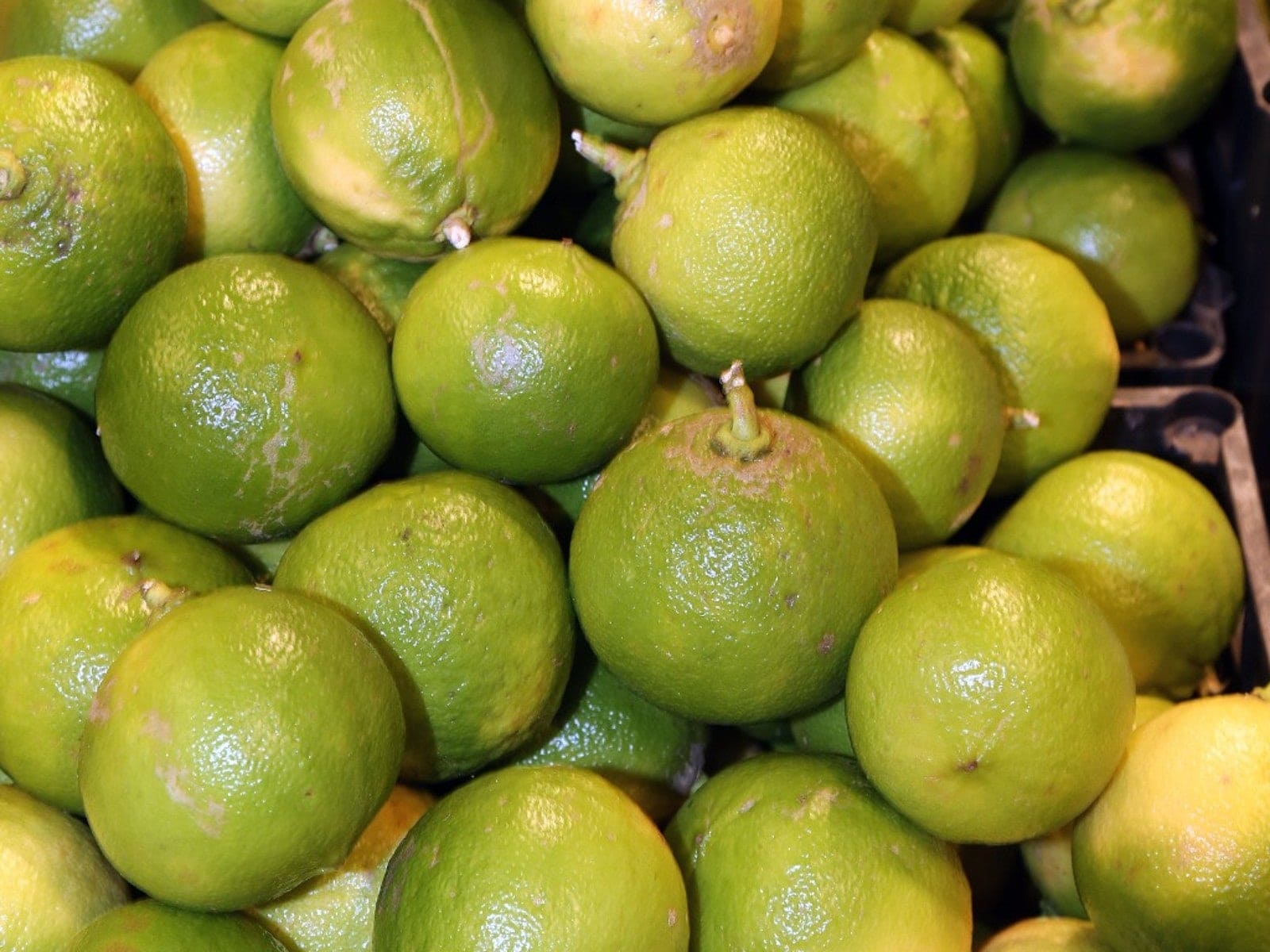
The essential oil has a complex scent profile with citrus, floral, and slightly spicy notes that make it valuable not just for tea but for high-end perfumes and aromatherapy products.
Chinotto Oranges: The Myrtle-leaf Oranges
Chinotto oranges are unique among bitter oranges for their extremely compact growth habit and distinctive appearance. The trees are slow-growing and dwarf, with unusually small, pointed leaves that are densely clustered. The small orange fruits hang on the tree for most of the year, making these trees highly ornamental.
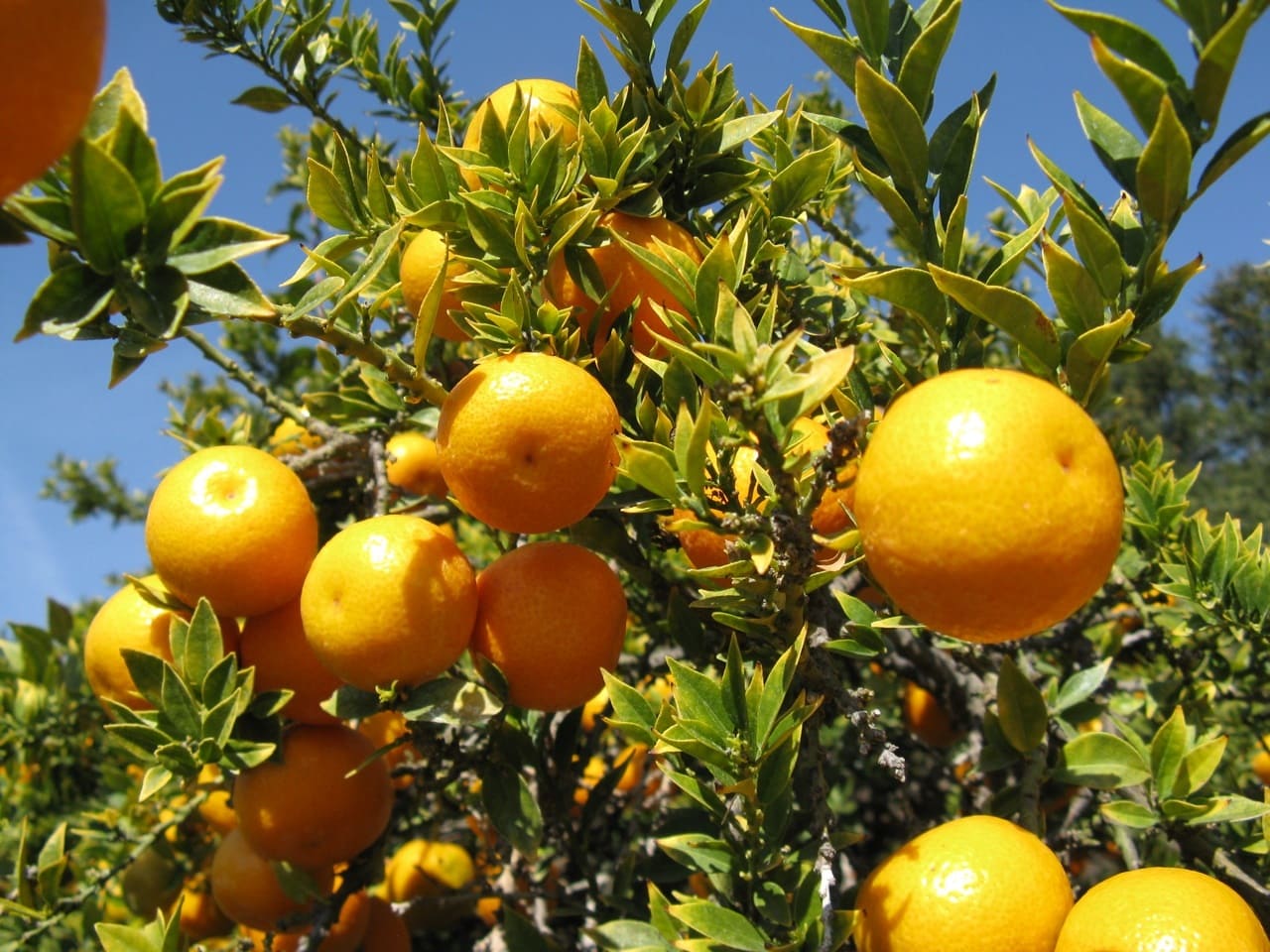
The fruit is moderately tart and seedy, and is traditionally used to make Chinotto, an Italian bitter soft drink, and is also used to flavor Campari liqueur.
Bouquet de Fleurs bitter oranges
Bouquet de Fleurs bitter oranges are grown primarily as ornamental trees, often used for hedging. These compact, thornless trees have dense, clustered foliage and produce abundant, fragrant flowers as their name suggests.
The fruits are bitter and acidic with many seeds, maturing in winter and holding very well on the tree, but they’re typically not consumed and are grown mainly for their decorative value.
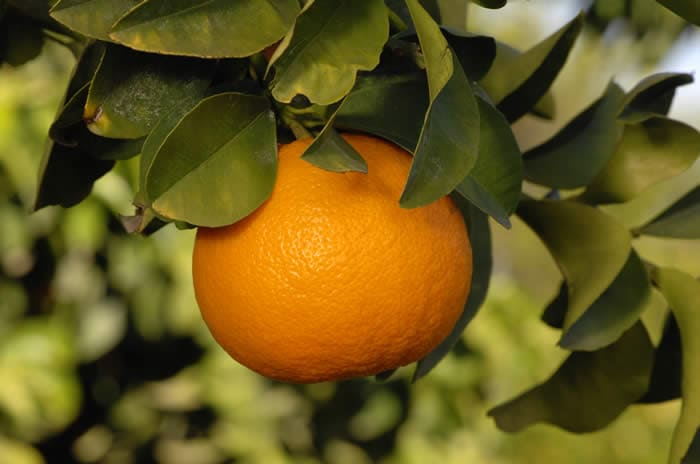
👉 Here’s How to Get Rid of Bitter Taste in Cucumbers With 4 Simple Techniques
Selecting and Storing Your Oranges: A Practical Guide
Understanding varieties is only half the battle—knowing how to select and store them ensures you get the best flavor and value. The key to choosing great oranges lies in understanding what to look for beyond just color.
- The Weight Test:
The most reliable indicator of a good orange is weight. A heavy orange for its size indicates lots of juice and fresh flesh. Light oranges often have thick, pithy rinds or dried-out flesh.
- Skin Clues:
Look for firm skin with a slight give when pressed gently. Avoid soft spots, which indicate beginning decay, but don’t worry about minor blemishes or scratches on the surface. The skin should feel taut, not loose or puffy, except for varieties like satsumas where loose skin is normal.
- Color Considerations:
Here’s where many people go wrong—color can be misleading. Oranges can be perfectly ripe while still showing green patches, especially if grown in consistently warm climates. Conversely, some oranges are treated with gas to enhance color for market appeal, so bright orange doesn’t always mean better flavor.
👉 Read the Ultimate Guide to Choosing Ripe Watermelons: Expert Tips and Tricks
- Storage Strategies:
Different orange types have different storage needs. Thick-skinned navels can sit at room temperature for several days and keep in the refrigerator for up to three weeks. Thin-skinned varieties like Valencias and most mandarins should be refrigerated promptly and used within 1-2 weeks.
Store oranges in the crisper drawer rather than sealed plastic bags, which can encourage mold growth.
For best flavor, remove refrigerated oranges about 30 minutes before eating to let them come to room temperature. Cold dulls the flavor compounds that make citrus so appealing.
👉 Here’s How to Dehydrate Apples at Home: Easy Steps for Perfect Results
Your Orange Selection Strategy: Matching Variety to Purpose
Rather than overwhelming you with bullet points, let’s think about orange selection like matching wine to food—the right choice depends on what you’re trying to accomplish.
- For Daily Snacking: Washington navel oranges are your reliable go-to choice. They’re available for most of the year, easy to peel, seedless, and consistently sweet. Cara Cara navels offer a more luxurious snacking experience with their beautiful color and complex flavor, though at a higher price point.
- For Juicing Excellence: Valencia oranges reign supreme here, providing maximum juice with excellent flavor that won’t turn bitter. If you’re juicing regularly, buy Valencias in bulk during their peak summer season. For special occasions or when you want stunning color, blood oranges create magnificent juice, though at premium prices.
- For Cooking and Baking: Navel oranges provide excellent zest due to their thick, flavorful peels, while their juice works well in recipes where it won’t be stored. For complex flavors in savory dishes, Seville oranges add depth that sweet oranges can’t match. Blood oranges bring both flavor and visual drama to desserts and salads.
- For Easy Family Eating: Any mandarin variety fits the bill, with clementines being the sweetest and most kid-friendly option. Tangerines offer more complex flavor for adult palates, while satsumas work well for those preferring mild citrus.
- For Special Occasions: Blood oranges and Cara Cara navels create impressive presentations, while Sumo Citrus offers luxury snacking experiences. These premium varieties make excellent gifts or centerpiece fruits.
The Seasonal Orange Journey: Timing Your Purchases
Understanding orange seasonality helps you get the best fruit at the best prices while enjoying peak flavors throughout the year.
- Fall Launch (October-December): The citrus season kicks off with early varieties. Satsumas and Hamlin oranges lead the way, followed by the first navels and clementines. This is when you’ll find the sweetest, most tree-ripened fruit as growers release their first harvest.
- Winter Peak (January-March): This represents the golden age of orange season. Nearly every variety is available, with navels, blood oranges, tangerines, and Seville oranges all at their prime. Winter’s cool weather helps develop the best flavors and colors, particularly important for blood oranges.
- Spring Transition (April-June): Late navels like Lane Late extend the navel season, while early Valencias begin their run. This transitional period offers good variety, though some winter fruits may start losing quality.
- Summer Solitude (July-September): Valencia oranges have the summer stage largely to themselves, providing excellent juice oranges when most other varieties are out of season. This is actually an advantage—summer Valencias face less competition and often offer good value.
Nutritional Goldmines: Why Variety Matters for Health
While all oranges provide excellent vitamin C, different varieties offer distinct nutritional profiles that can influence your choice beyond just taste preferences.
- Antioxidant Champions: Blood oranges lead the pack in antioxidant content, thanks to their anthocyanins. These compounds provide anti-inflammatory benefits and may help protect against various chronic diseases. Cara Cara oranges, with their lycopene content, offer different antioxidant benefits similar to those found in tomatoes.
- Vitamin C Variations: While all oranges are excellent vitamin C sources, some varieties shine brighter. Cara Cara navels contain about 20% more vitamin C than regular navels, while Tarocco blood oranges are among the highest in vitamin C of all orange varieties.
- Fiber Considerations: Thicker-skinned varieties like navels provide more dietary fiber per fruit, especially if you eat some of the white pith (which is perfectly edible and nutritious, though bitter).
Common Orange Mysteries Solved
- Why do some oranges taste different even within the same variety?
Growing conditions dramatically affect flavor. Oranges from trees stressed by drought often concentrate sugars and develop more intense flavor, while those from well-watered trees may be larger but blander. Temperature variations, soil conditions, and even the age of the tree influence taste.
- What’s with the green patches on ripe oranges?
Orange color develops in response to cool temperatures, not ripeness. In consistently warm climates, perfectly ripe oranges may retain green coloring. Conversely, some oranges are exposed to ethylene gas to enhance color for market appeal, so bright orange doesn’t guarantee peak ripeness.
- Why are some oranges so expensive?
Premium varieties like Sumo Citrus require intensive labor—hand-picking, careful curing, and often years of waiting for trees to mature. Blood oranges command higher prices due to their limited growing regions and shorter seasons. Organic oranges cost more due to more expensive cultivation methods and typically lower yields.
- Can you substitute one orange variety for another in recipes?
Generally yes, but consider the purpose. Sweet recipes work with any sweet orange, though you might need to adjust sugar levels. For marmalade or savory applications requiring pectin and complex bitter notes, Seville oranges are irreplaceable.
For recipes where appearance matters, blood oranges or Cara Cara varieties provide unique visual appeal.
Your Citrus Adventure Awaits
The world of oranges extends far beyond the simple choice between “regular” and “navel” at the grocery store. Each variety represents generations of cultivation, selection, and refinement to create fruits that excel in specific applications.
From the reliable everyday pleasure of Washington navels to the dramatic flair of blood oranges, from the juice-packed efficiency of Valencias to the premium luxury of Sumo Citrus, there’s an orange perfectly suited to every taste and purpose.
Understanding these varieties transforms shopping from a mundane task into an opportunity for culinary exploration.
When you know that Cara Cara navels will bring both beauty and complex flavor to your fruit salad, that Seville oranges are essential for authentic marmalade, or that Valencia oranges will give you the most juice for your dollar, you’re equipped to make choices that elevate your cooking and eating experiences.
The next time you’re in the produce section, pause for a moment to consider what you’re really looking for. Are you planning a quick snack, a special dessert, or your daily glass of fresh juice? Let that purpose guide your choice, and don’t be afraid to try something new. The world of oranges is vast, delicious, and waiting to surprise you.
Start with one new variety this week—perhaps a blood orange if you’ve never tried one, or Cara Cara navels if you want familiar comfort with a twist. Your taste buds will thank you for the adventure, and you’ll never look at the citrus section the same way again.
